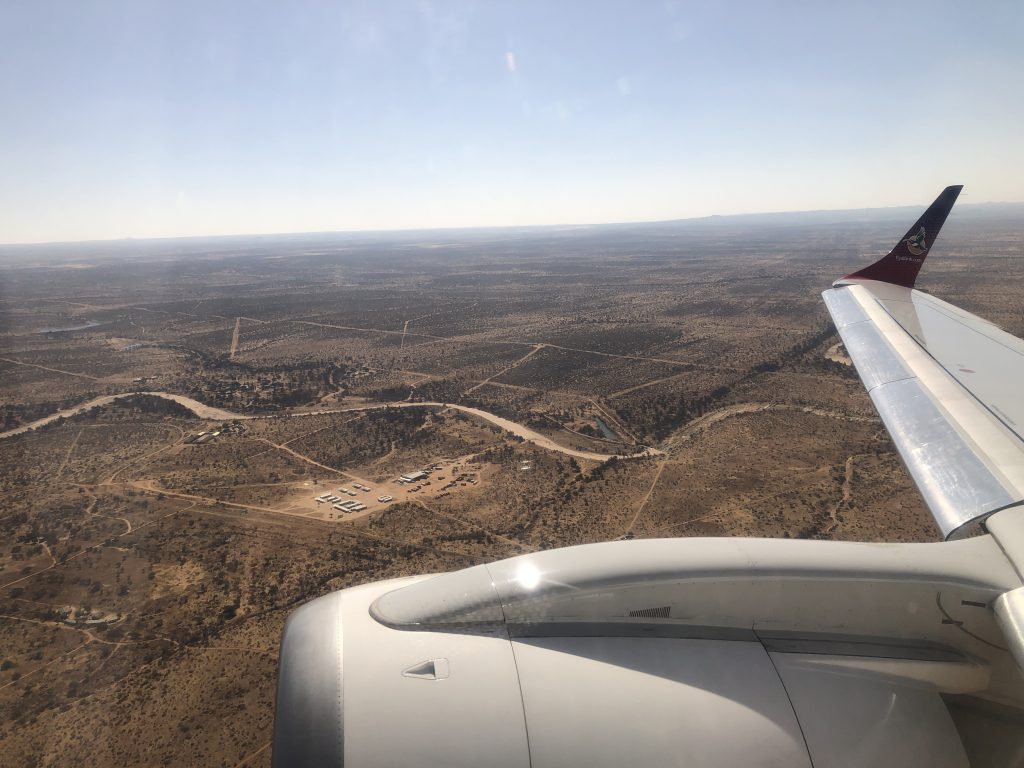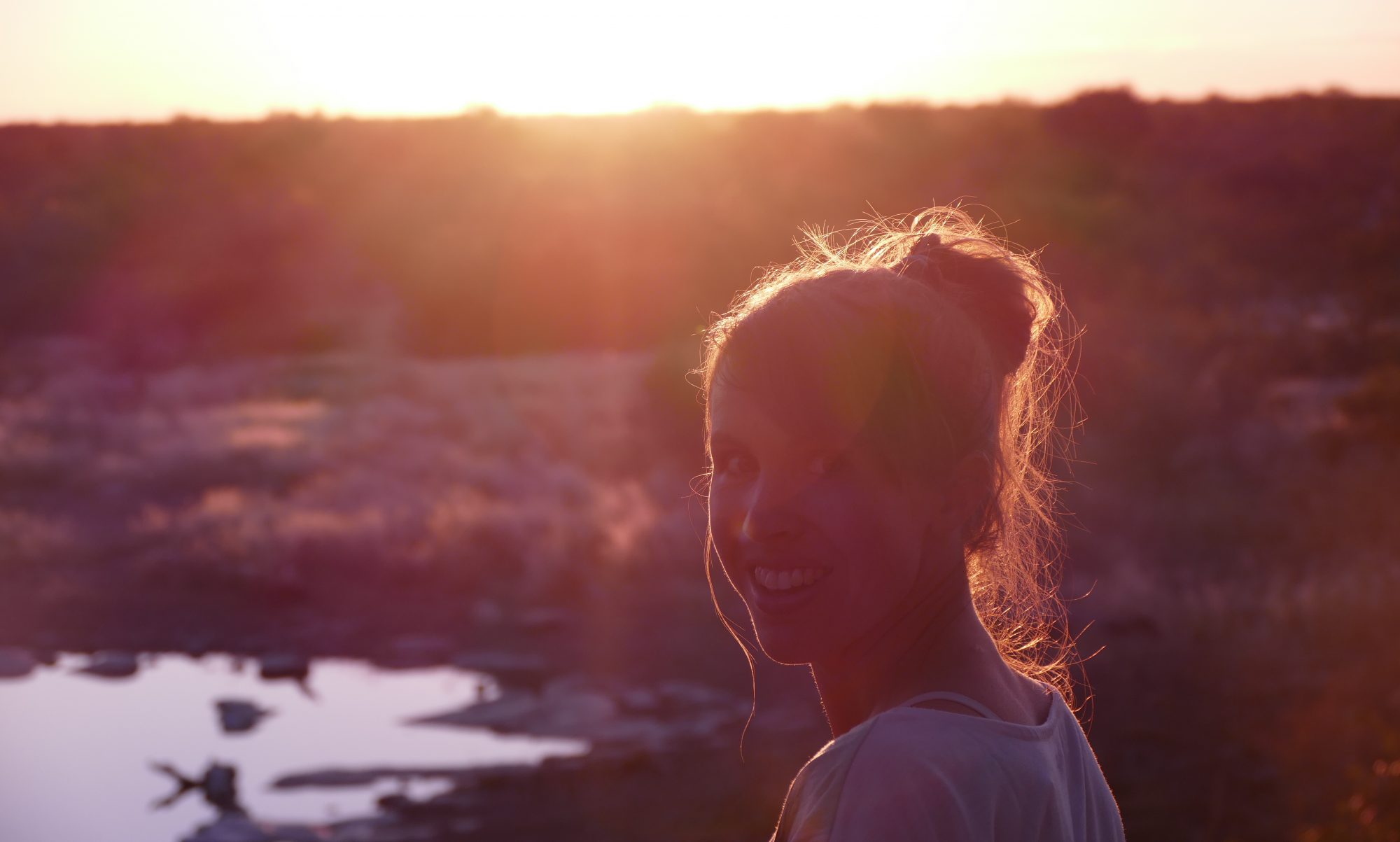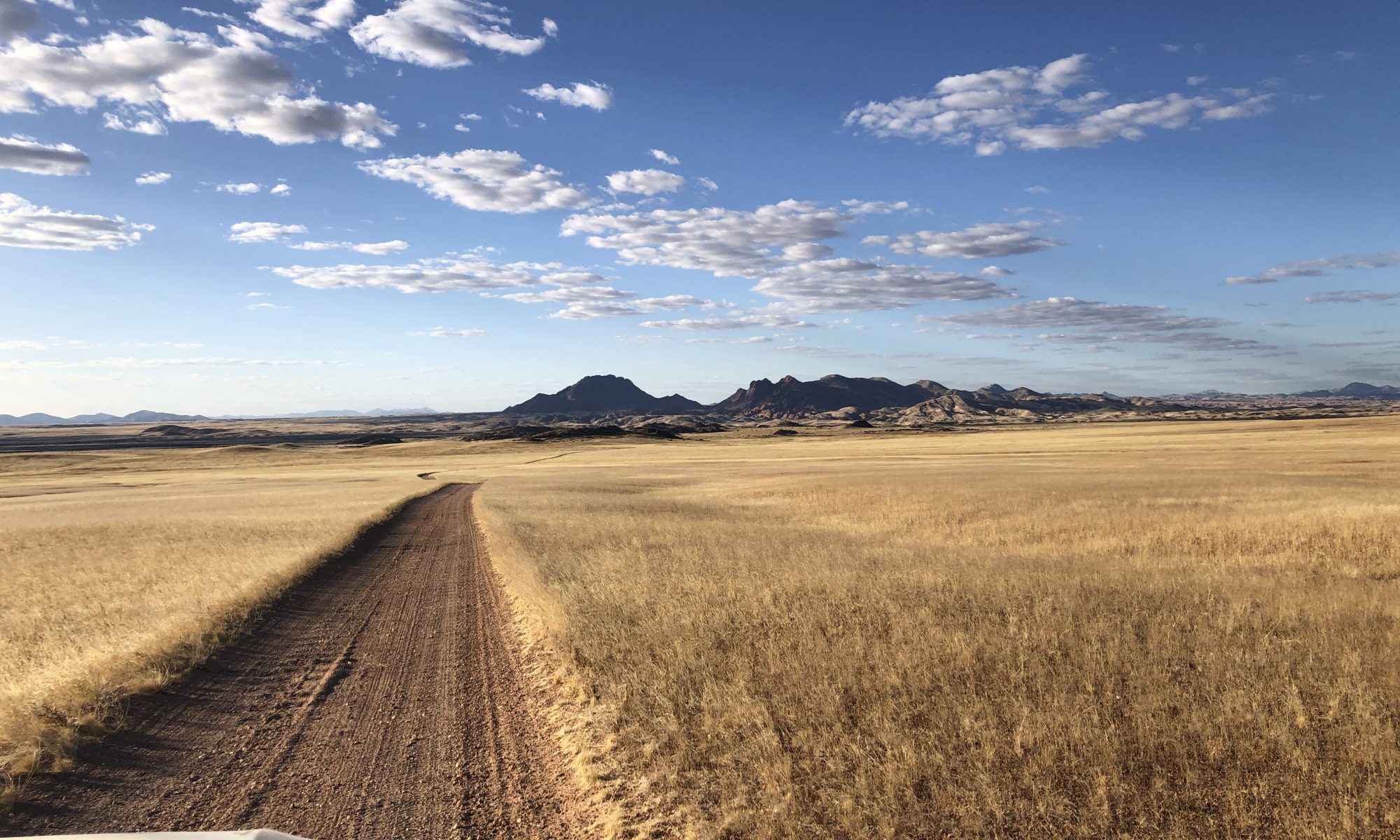A hiker’s paradise
Hereafter you will find a two week itinerary, a dream for all hiking addicts through central and southern Namibia including the oasis-like Naukluft Mountains, the famous Dead Vlei and the fascinating Fish River Canyon. You can end this route via the Kalahari and relax while enjoying some wildlife action from your tent.
Namibia in 17 Days from Windhoek to the Fish River and the Kalahari desert!
Jun. 2022: Hello, Bonjour and !Gâi tsēs from a two weeks travel route through the stunning landscape of central and southern Namibia. Here, you can find ideas for an individual itinerary and where you would like to go for some spectacular hikes in this marvelous country. Prepare yourself for glorious rock formations in Spitzkoppe, the oldest desert on earth with its ever changing red sand dunes in Sossusvlei, the sheer beauty of the epic Fish River Canyon and the red sand with its fabulous wildlife encounters in the Kalahari of Namibia.
Short summary:
- Length – 17 days / 16 nights
- Total km – ca. 2.500km
- Vehicle – 4WD indispensable with a tent and fully equipped with camping utensils
- Road conditions – tared, gravel, sandy and potholed
- Accommodation – Lodges, glamping, camping
- Highlights – Sossusvlei, Fish River Canyon
If you have 17 days of vacation and you are looking for an adventurous hiking experience combining unbelievably beautiful sceneries with outdoor experiences, Namibia will surely not disappoint you. Keep in mind to not drive during darkness, as it bears many risks due to bad road conditions, crossing wildlife and other hazardous possibilities that you might not be used to.
WDH Airport – Windhoek drive about 50km; 40min
Day 1: Most of the flights come in early at WDH International Airport in Windhoek. This gives you a full first day in Windhoek after having picked up your 4×4 camper, including tent, fridge and spare wheels, before driving into town to stock on provisions for the next days to come. You will need plenty of water, food and don’t forget about the right outdoor gear for the hikes to come. If you travel during the Namibian winter time, keep in mind to take enough warm clothes and an appropriate sleeping bag that will cater also for minus degrees during the night. Windhoek is quite save, however watch out for some credit card tricks (e.g. someone wants you to buy a parking ticket at an ATM) and pick pocketing. The rest of your day, you can either go for a sightseeing tour to explore the famous Christ Church, wander through the National Museum of Namibia or take the time to go for a short hike on a close by Mountain, where you have a splendid view on Windhoek and the sun setting behind the hills.
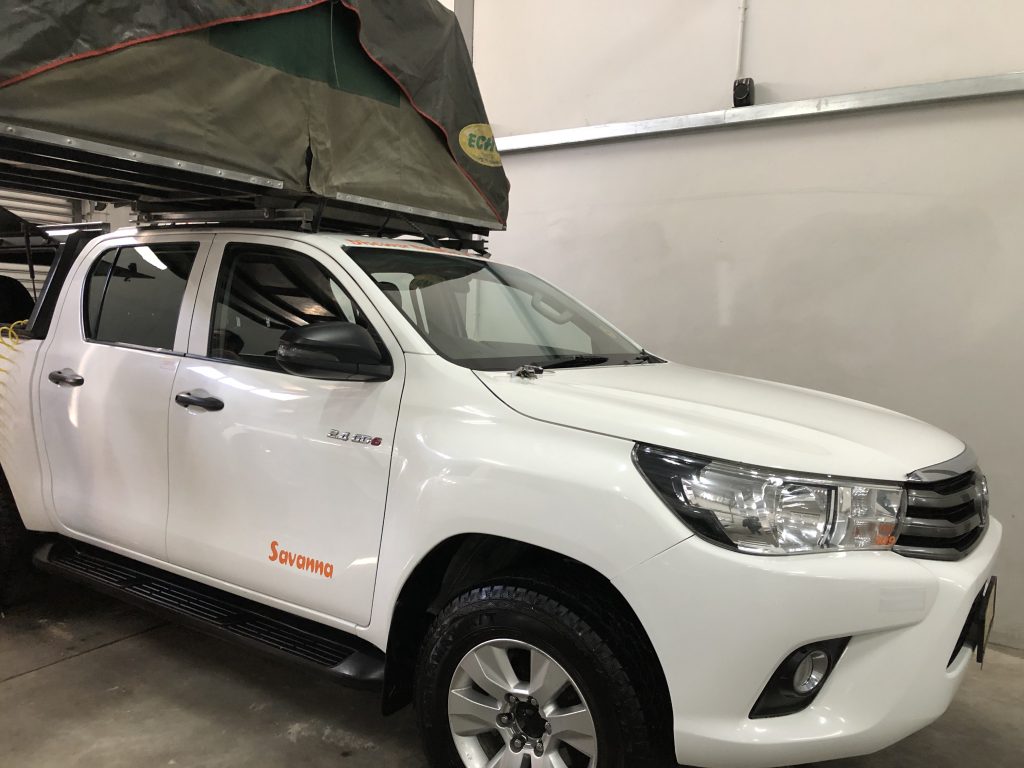
Windhoek – Spitzkoppe drive about 270km; 3hr
Day 2 – 3: The Spitzkoppe Camp is the perfect stay for the first nights in your rooftop-tent. There is no running water in the camp and only dry toilets but in the nearby restaurant you can take a hot shower and use the bathroom facilities if you fancy a bit more luxury. The campground is accessible by ordinary cars, however to explore the Spitzkoppe region you will rather want to have a 4WD. This area is known for its ancient rock art paintings and incredible hikes. Enjoy the beauty of pure nature and pitch dark night skies.
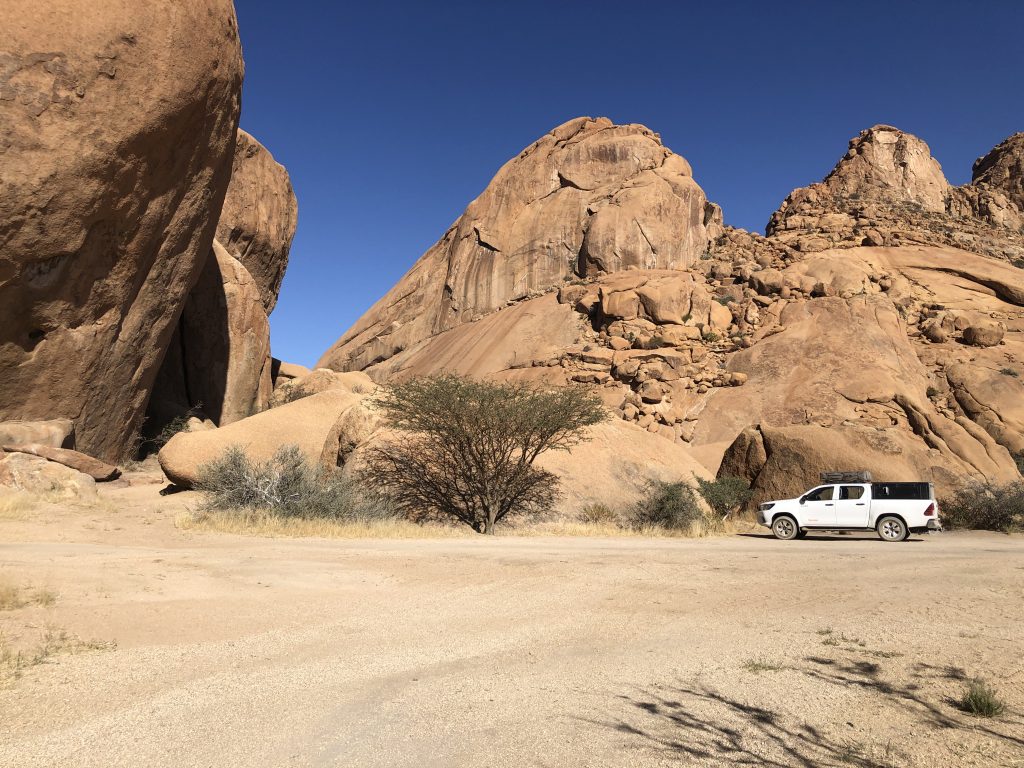
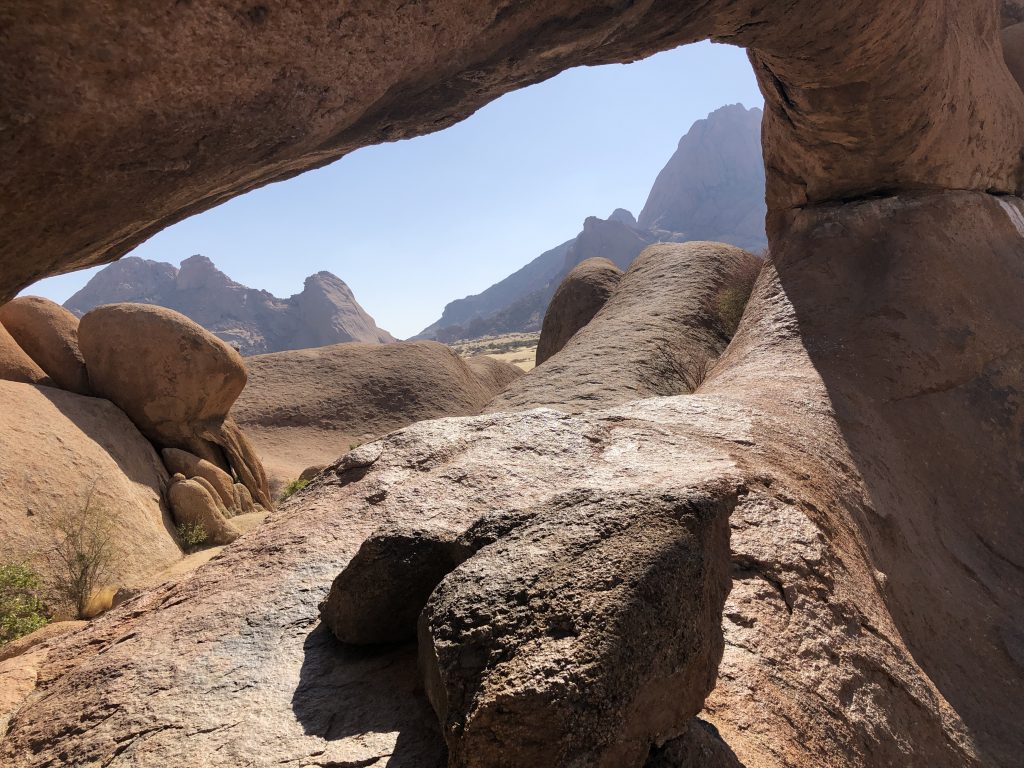
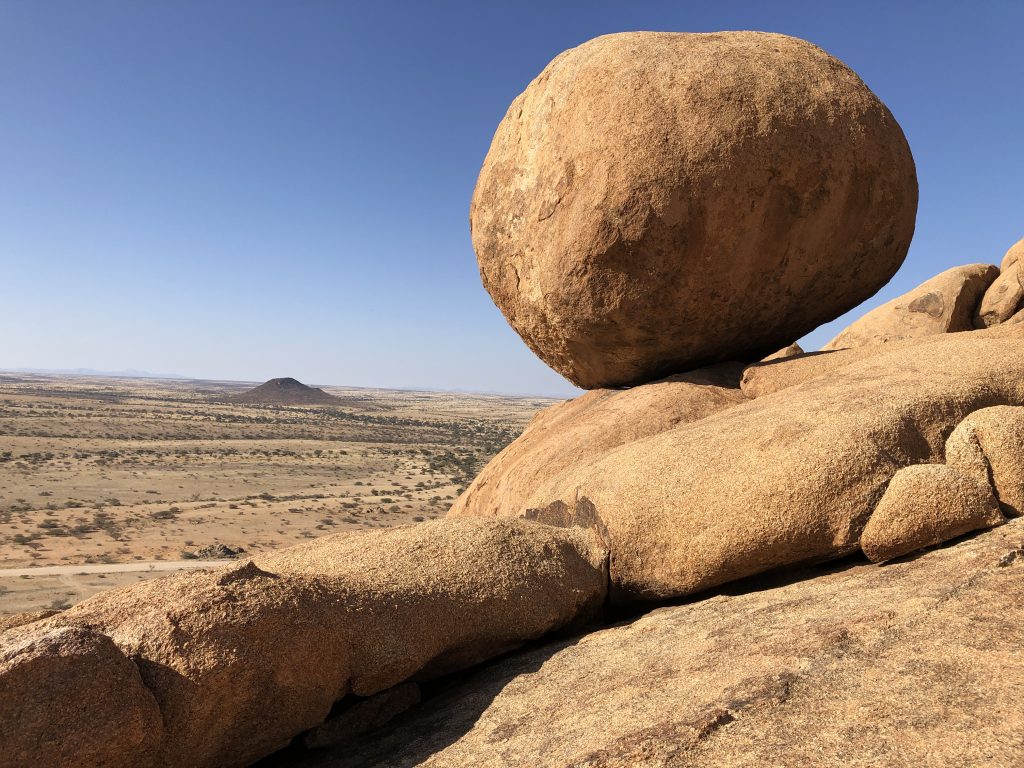
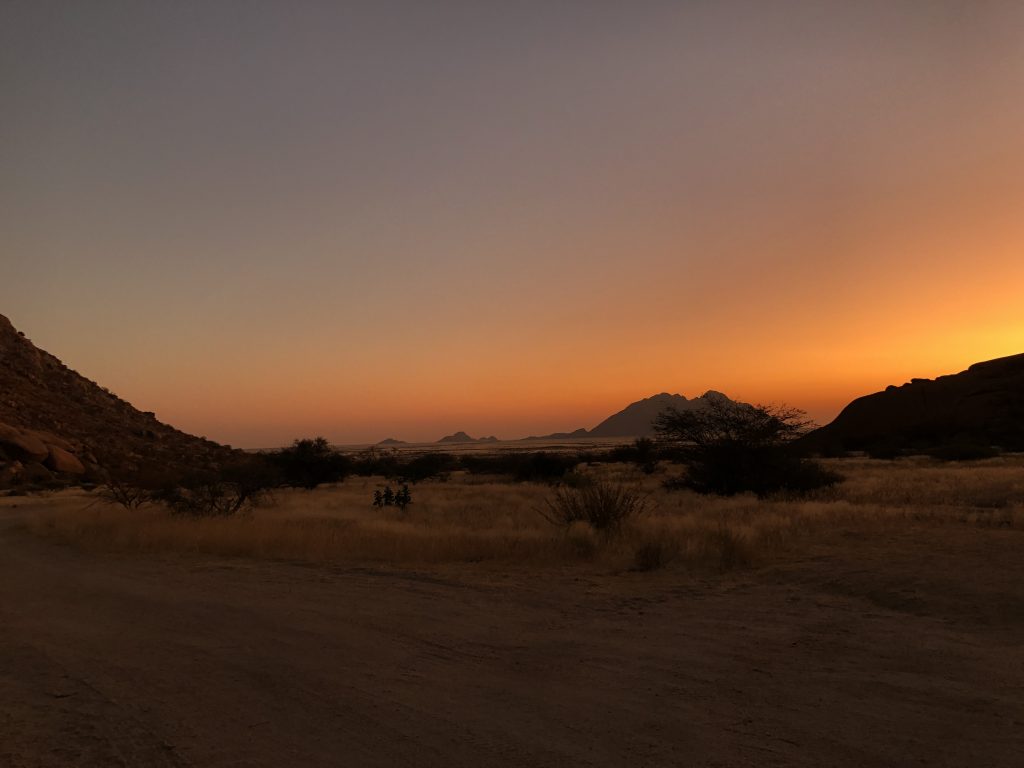
Spitzkoppe – Brandberg drive about 130km; 2hr
Day 4: Enjoy a night in the White Lady Lodge close to the Brandberg. Yet keep in mind if you wish to have a chance to encounter the desert-adapted elephants you might want to stay two nights or arrive very early in camp as the game drive starts around 8am and will last up to 5 hours depending if the elephants are in the region and where exactly they wander through the bush. Besides the elephant, the region offers stunning sunset views and you can go on a drive through the close, dry riverbed if you fancy tricky sand pad driving. Or you go for an hour hike to find the White lady painting in the ancient rocks.
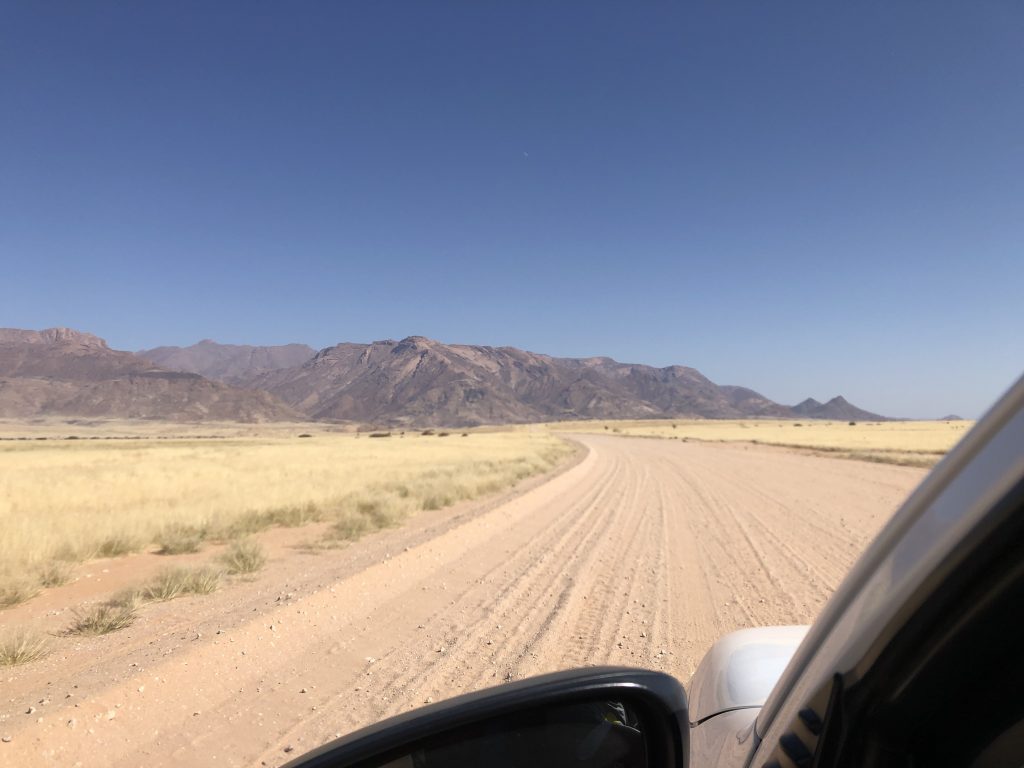
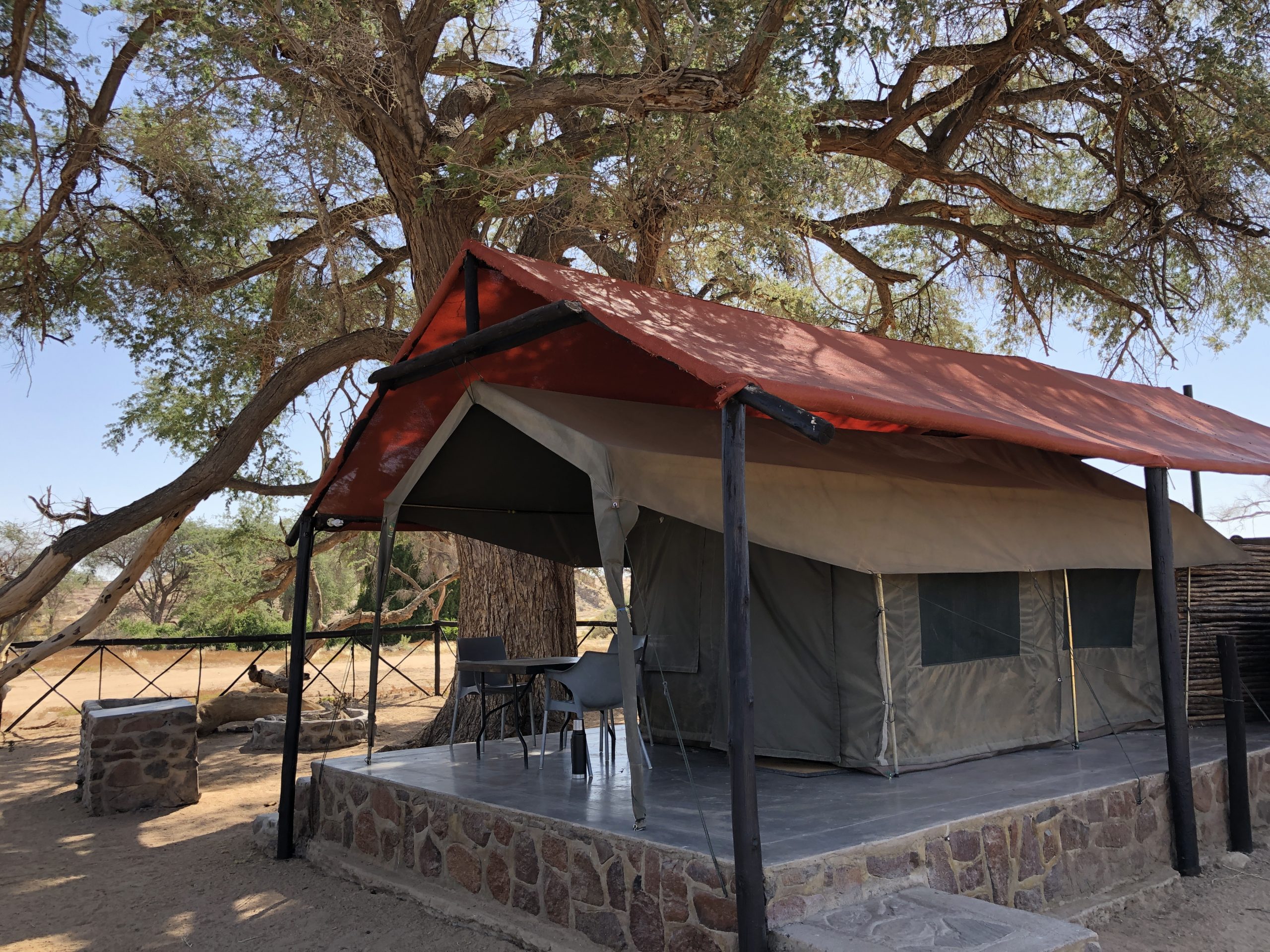
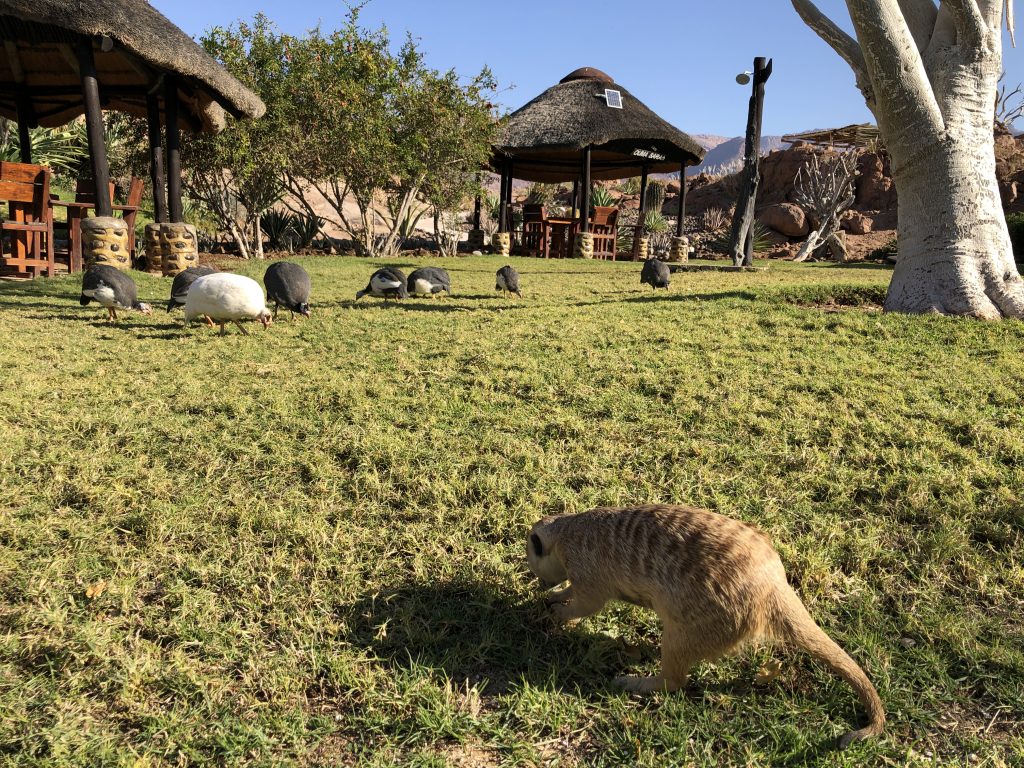
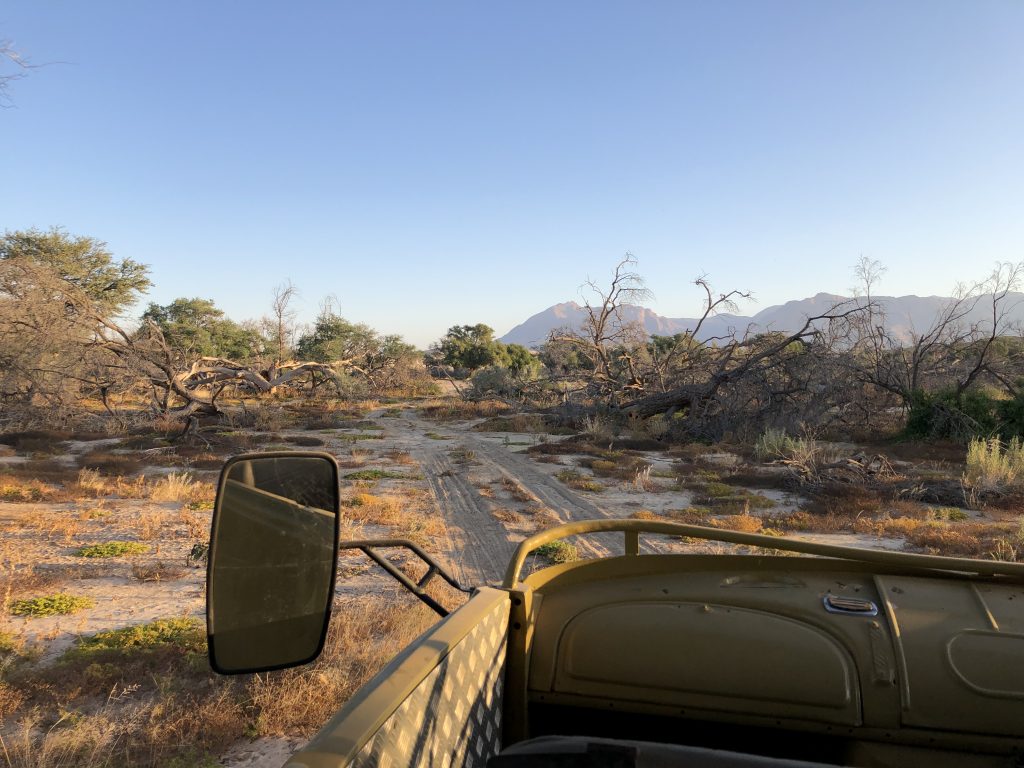
Brandberg – Namib Desert drive about 450km; 5,5hr
Day 5: Driving southwards and passing by of a possible lunch break in Swakopmund or Walvis Bay, the goal for this evening though is to reach Rostock Ritz Desert Lodge, situated in a greener area with fantastic mountain views. If you are lucky, you can see some ostriches, zebras and oryx along your route. There are camp sites and bungalows available to stay for a night. All Bungalows have stunning views on the green plains below you, offering a marvelous view towards the mountains at the horizon. The camp site is about 7 kilometers away from the main lodge with beautiful bathroom facilities that view right into the open plains. there are lots of hiking possibilities. The sunset hiking trail is perfect for a short hike, when the sun is about to set.
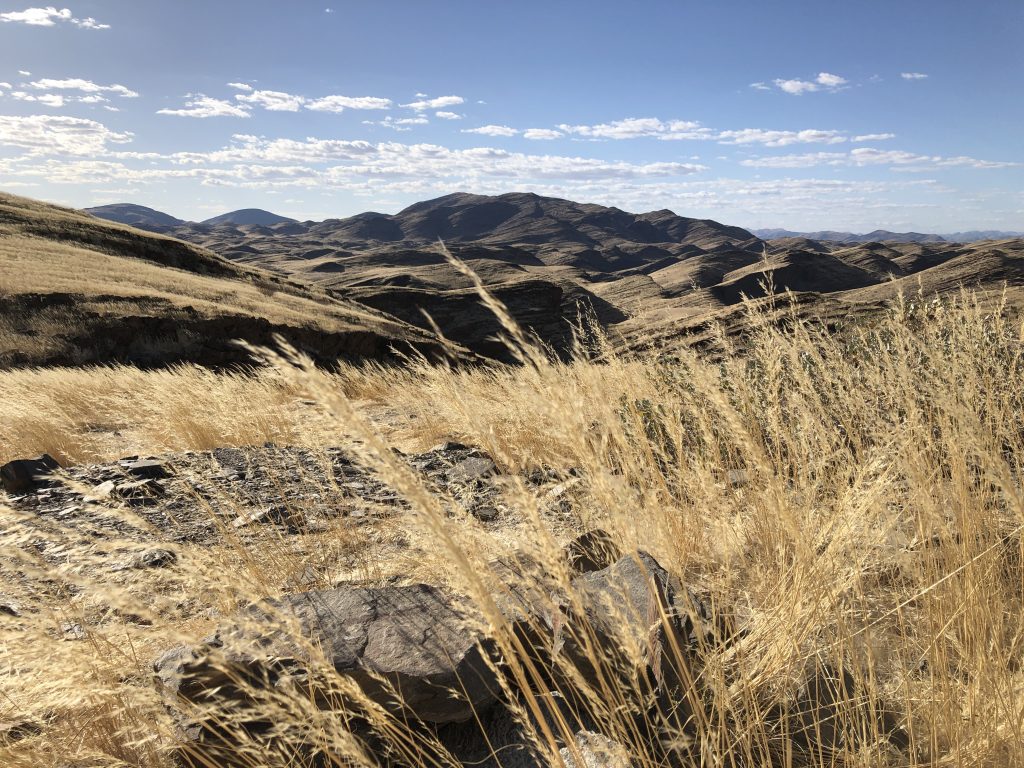
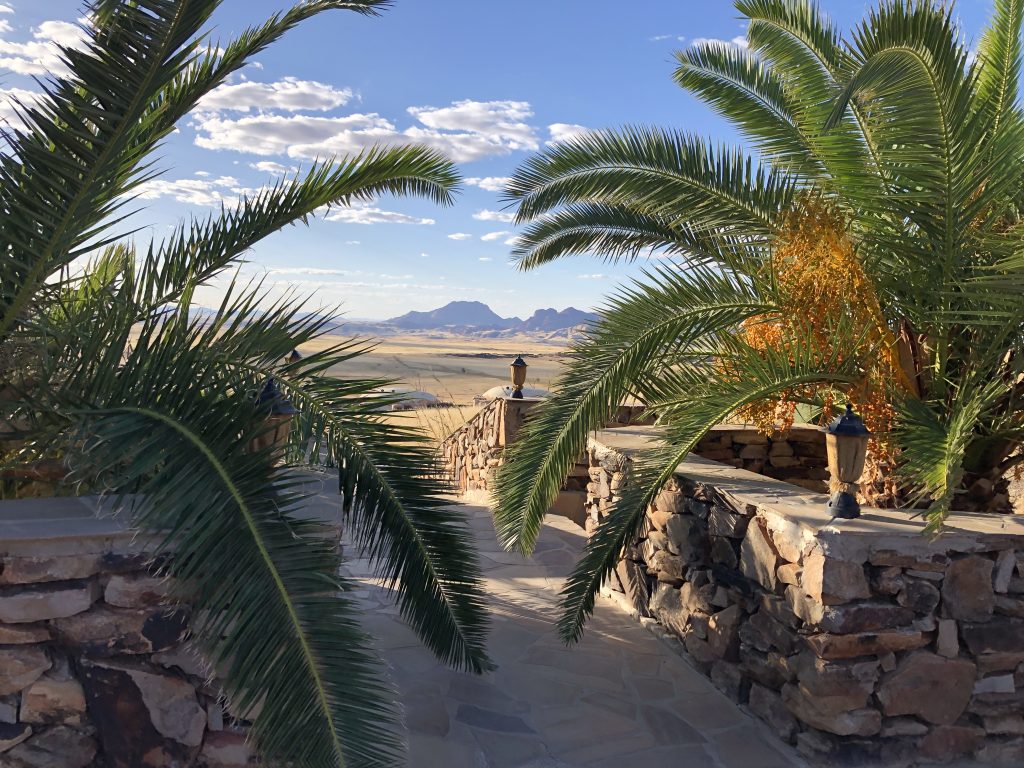
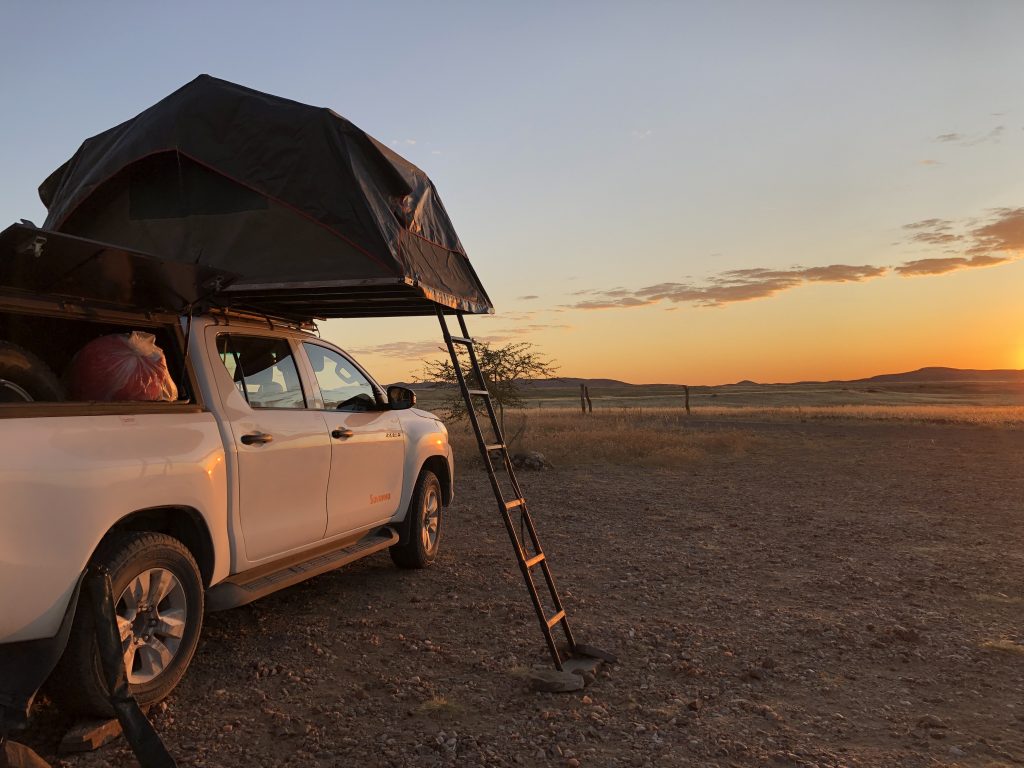
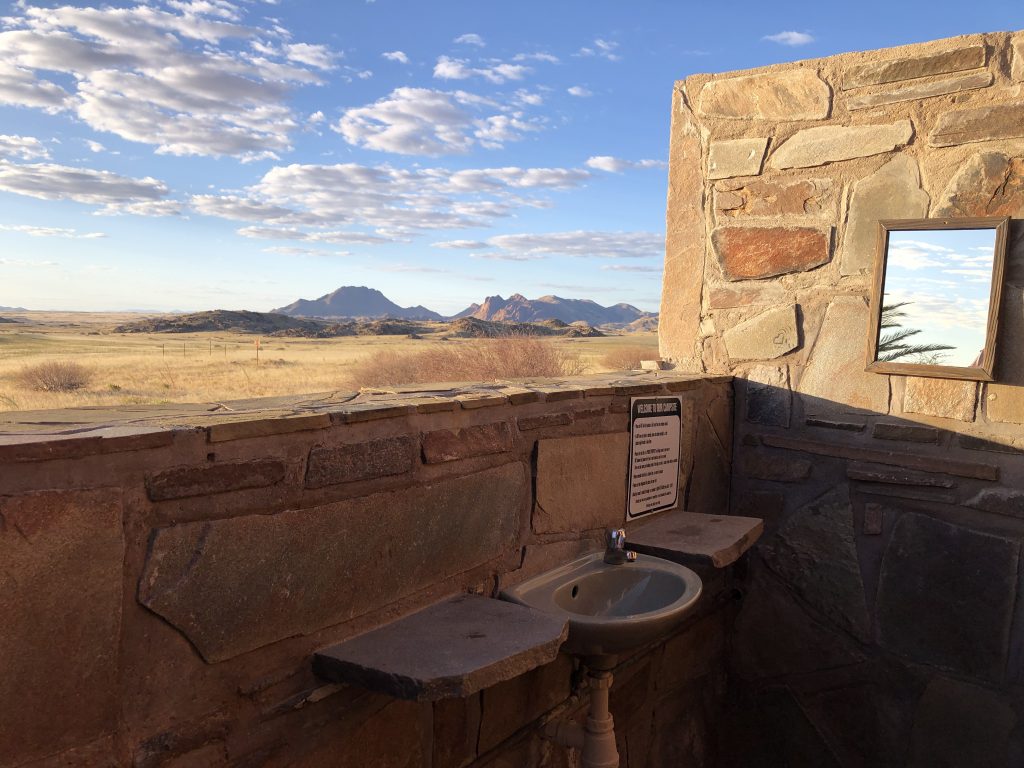
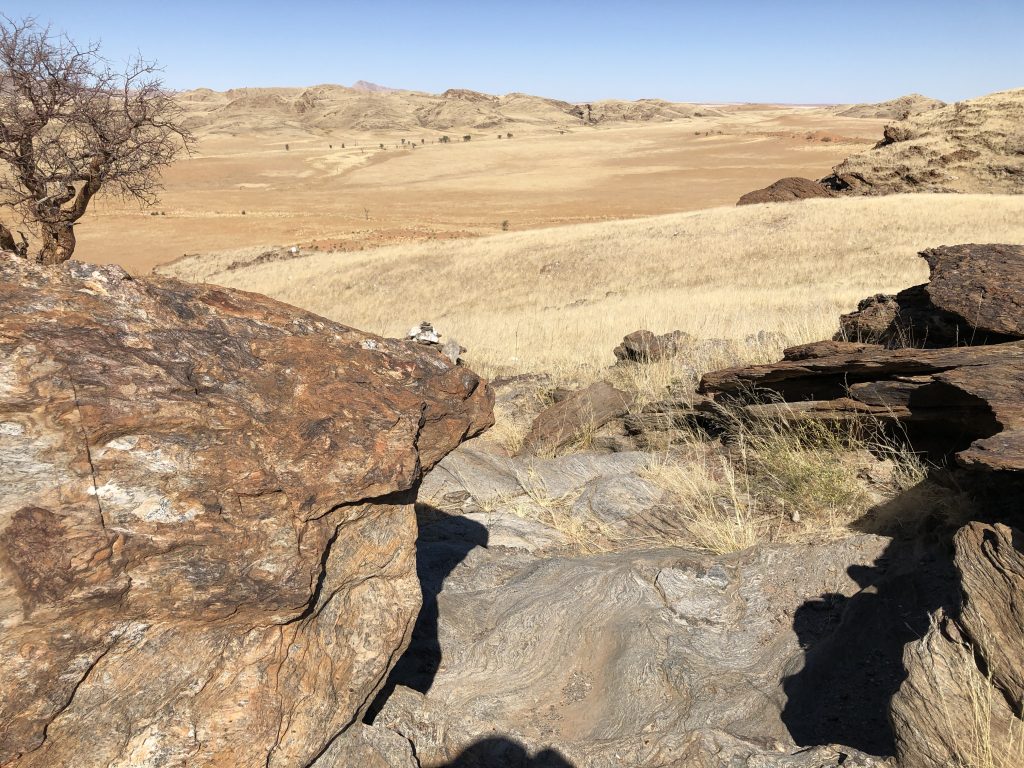
Namib desert – Naukluft Mountains drive about 130km; 2hr
Day 6: If you are in the mood for another hike this morning you can pick one of the other 10 possible routes that leave from the main lodge to get your workout before heading a bit further southwards on the C14 gravel road towards the Naukluft Mountain Zebra Park. First glimpse of amazing landscapes will astound you. The moon-like landscape around the Kuiseb and Gaub passes can actually turn in a yellow grass paradise if there has been good rains during the summer. As you get closer, the scenery turns more and more red and desert-like. Take a stop at Solitaire where you can stock up on some essentials of just enjoy a delicious apple tart. From there on you are close to your next destinations. You can camp at the Namibian Wildlife Resort (NWR) Naukluft camp in the Naukluft Mountain Zebra Park. You pick your camp site once you arrive on place, there are a few down at the river and some up closer to the bathrooms. Watch out for the baboons that will not be afraid of you and like to share your food with you.
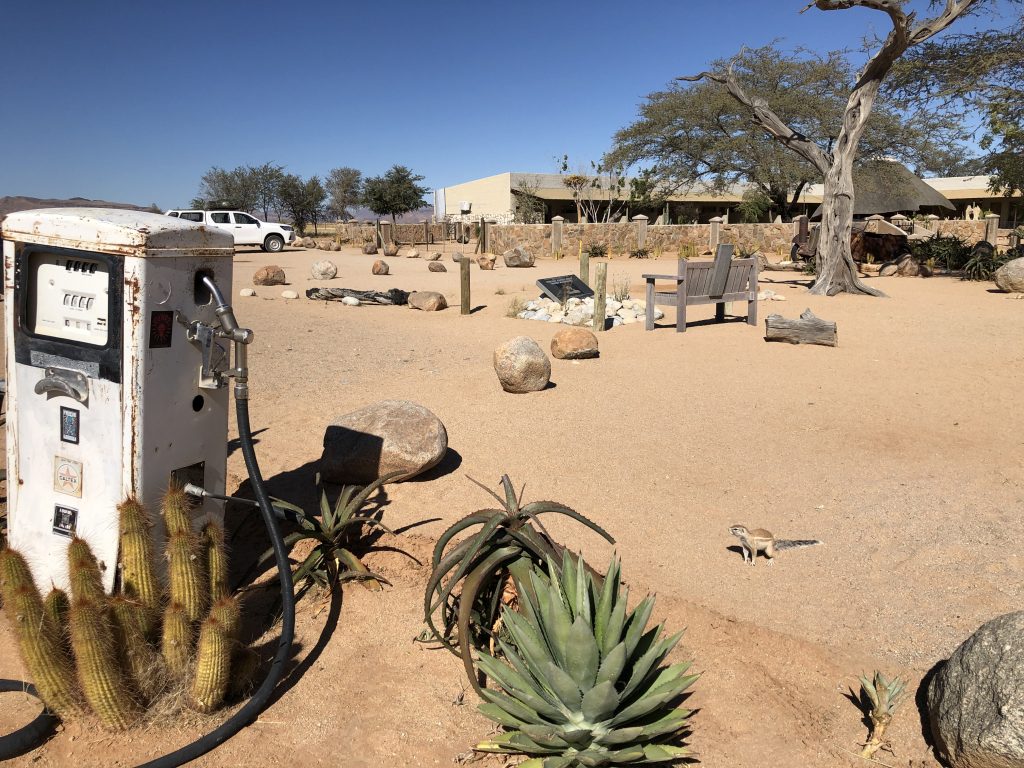
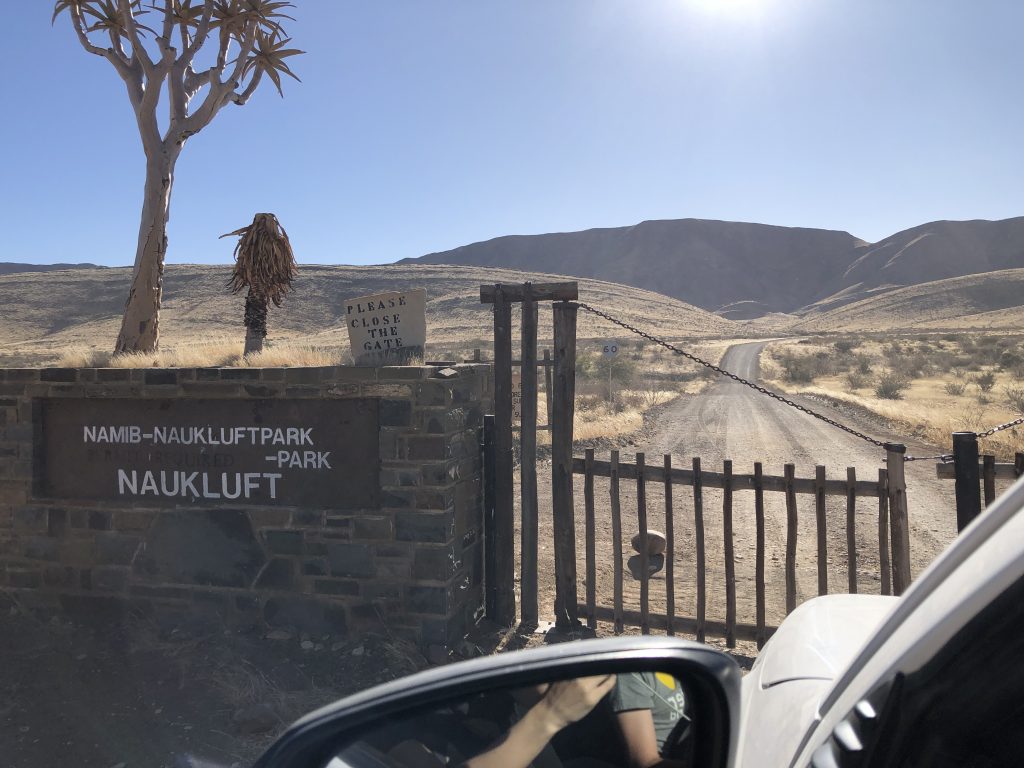
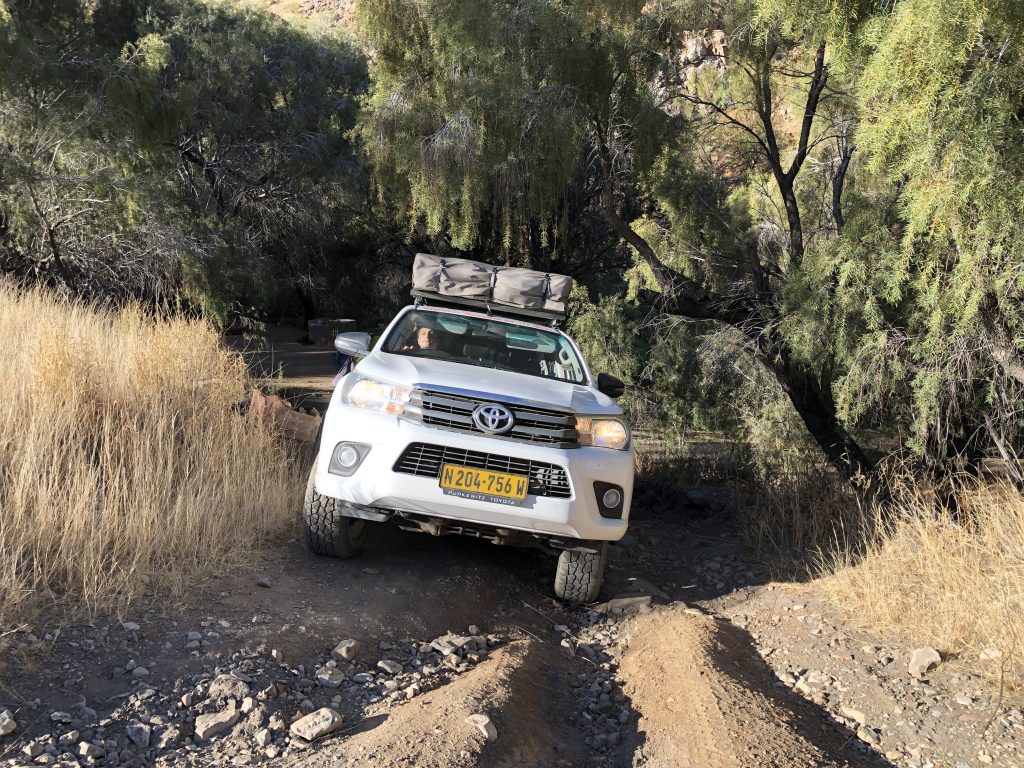
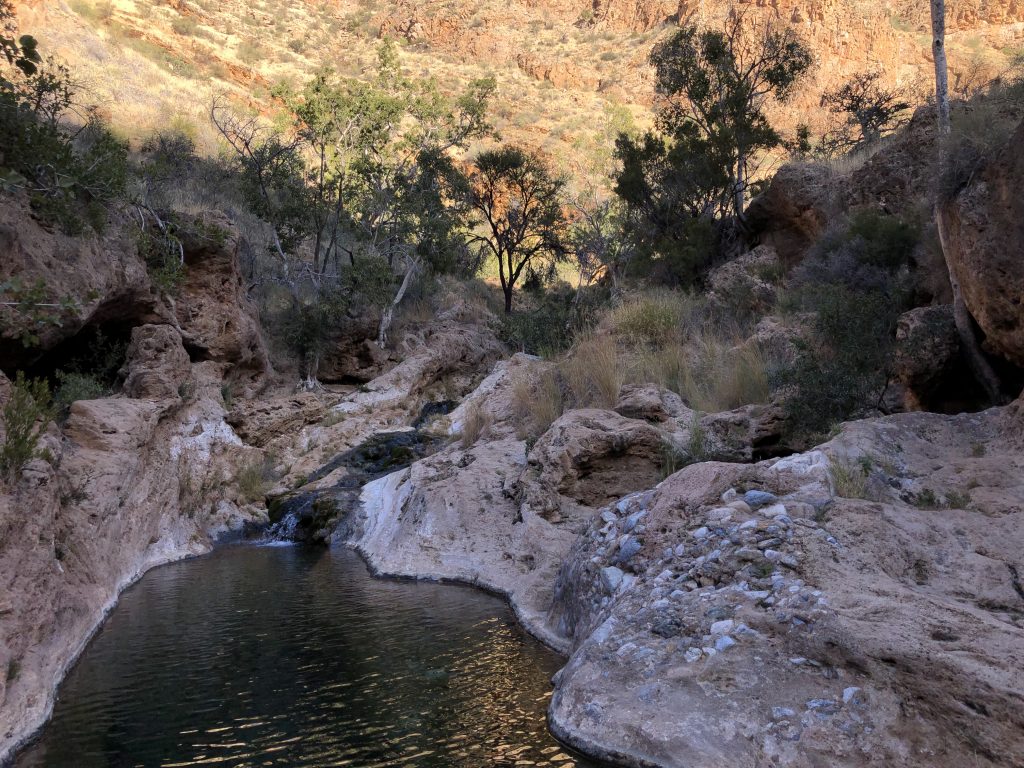
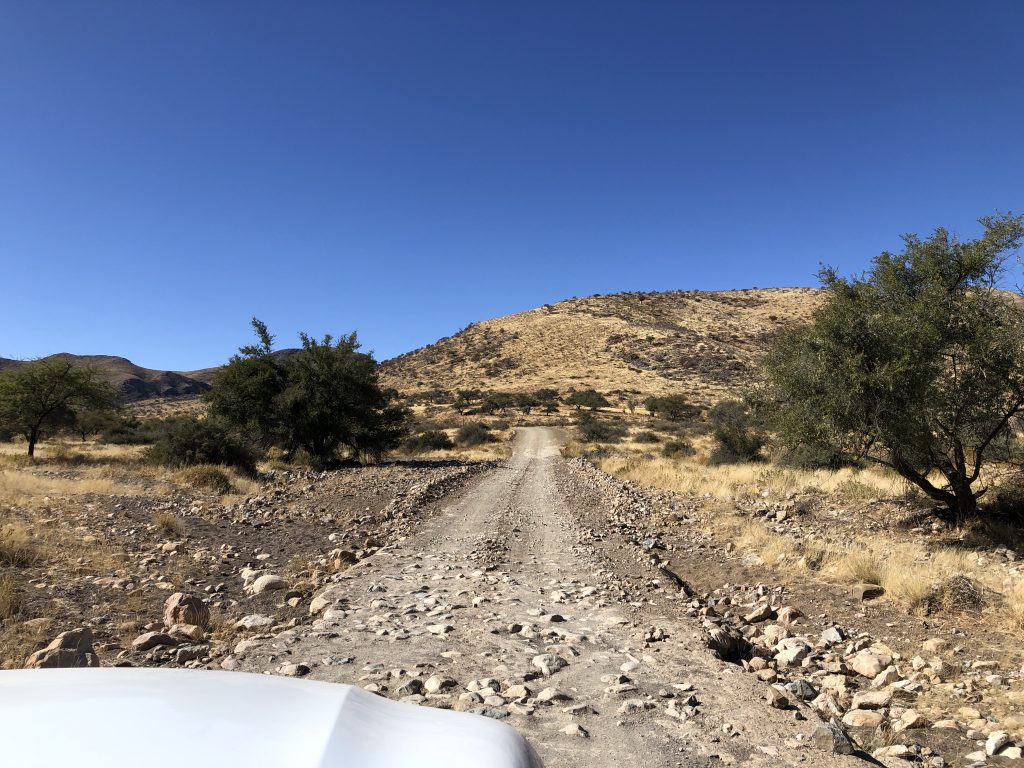
Naukluft Mountains – Sesriem drive about 90km; 1hr 30min
Day 7 – 9: Today you will head even further south to the epic region that is home to Sossusvlei and the Sesriem Canyon. there really is no other place on earth like this and it is worth staying here 3 nights, of course you can also shorten the trip to just 1 or 2 nights, depending on your time. However, personally I would recommend at least 2 nights to be able to see the highlights. If you have 3 nights even better as you can then enjoy all the magical beauty and outdoor activities the desert has to offer. Lodging and accommodation is available in its abundance while they are well spread out providing you with the sense that you are actually exploring the desert on your own. There are only 2 accommodation places within the park that will allow you to drive towards Sossusvlei early morning before the sun rises. Both places are run by NWR, one being the Sesriem Rest camp and the other one is the Sossus Dune Lodge. Other accommodation outside the park, such as the Desert Quiver Camp won’t give you the same possibility as you will have to wait for the park gate to open up at sunrise before you can make your way to the majestic places of Sossusvlei and Dead Vlei. Some of the lodges can be quite pricy but its worth to check any specials, in particular if you qualify for the Southern African Development Community (SADC) rate as you can save up to 30 – 40%. If you wonder what to do in this magnificent place: It is all about the hikes! Quite spectacular is a sunrise dune hike to the top of Dune 45 in the park, you will have to leave your camp or lodge early in the dark so be careful when driving as you will most likely encounter wildlife and you don’t want to experience a sharp oryx horn in your car windows. Thus, please drive responsibly. After enjoying the sun rising from the top of the dune you can make your way back to your car to drive deeper into the park to Sossusvlei. For the last 4km the tar road stops and a 4WD is needed to reach your goal through the red sand. Many hiking possibilities are awaiting you here, be it climbing one of the biggest dunes Big Daddy or walking from Sossusvlei to Dead Vlei. You can even hike to Hidden Vlei. If you are lucky you might spot some antelopes. But also at the entrance of the park, there is enough to be explored as you can hike the Sesriem Canyon. If you have enough from hiking by now you can either enjoy an unforgettable sunrise hot air balloon safari with a sublime breakfast in the desert or just relax in your lodge and watch the animals coming for a drink at the waterholes.
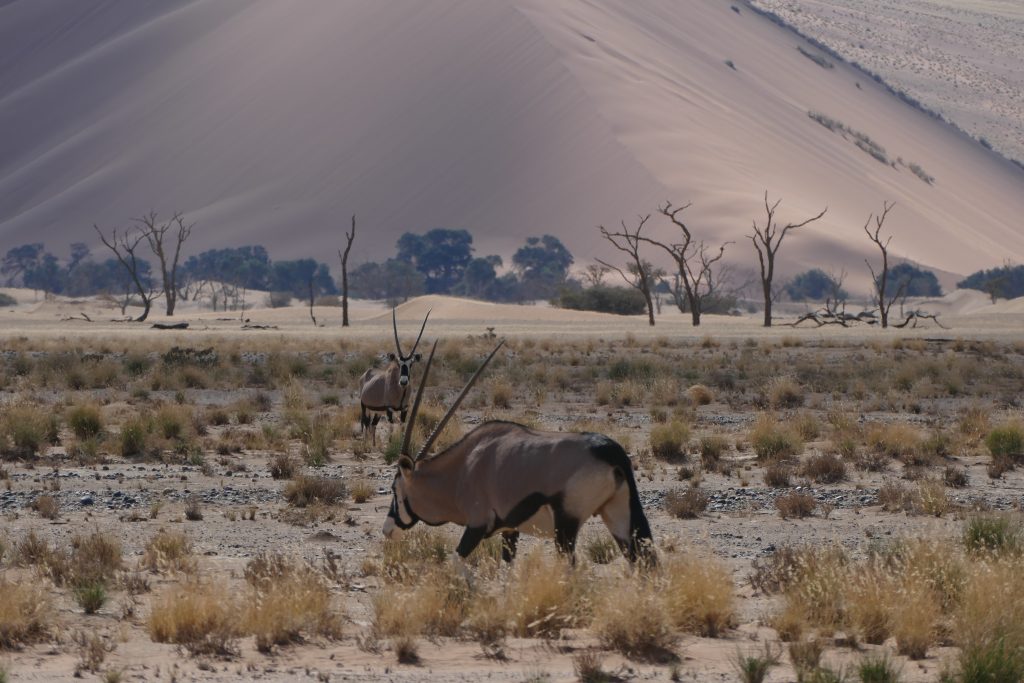
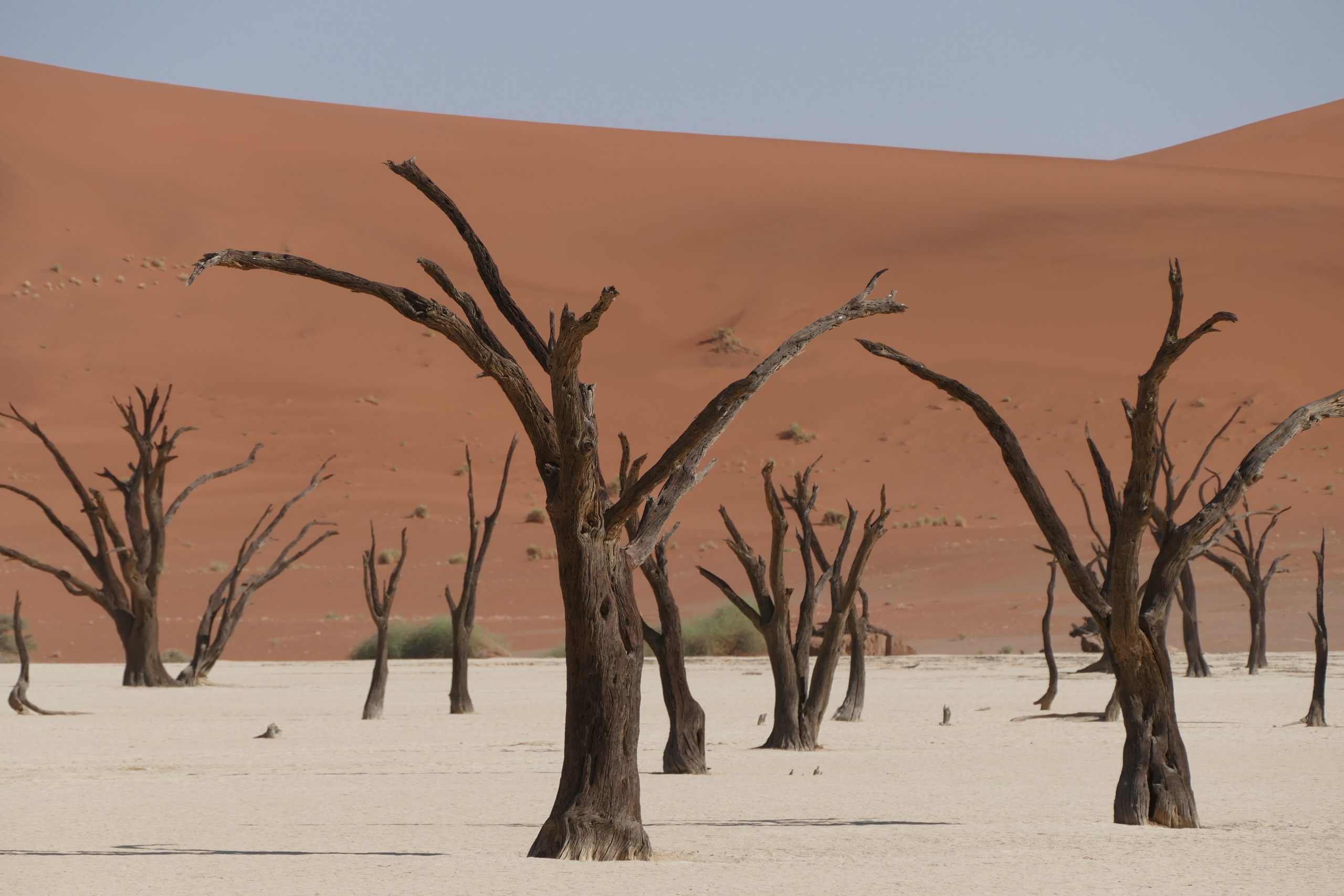
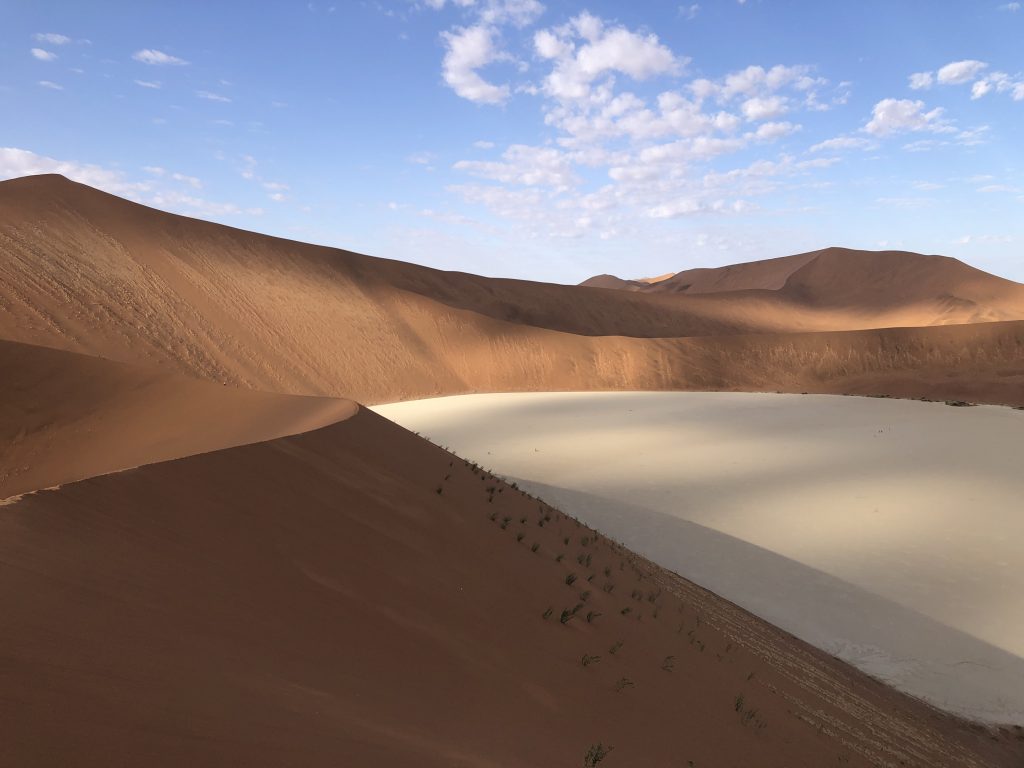
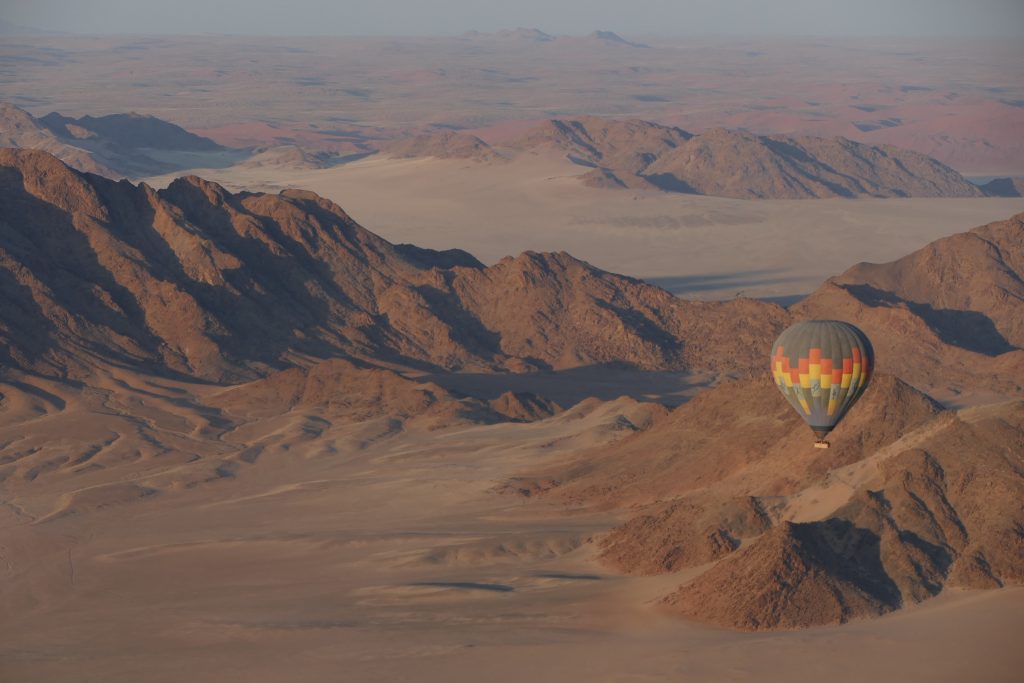
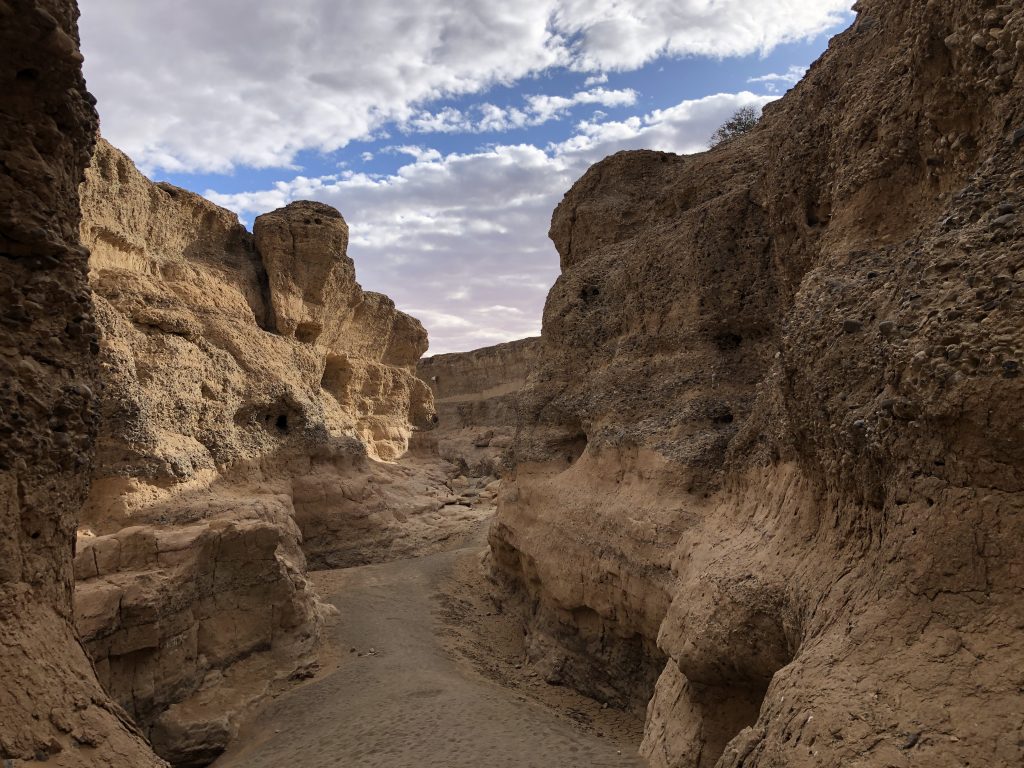
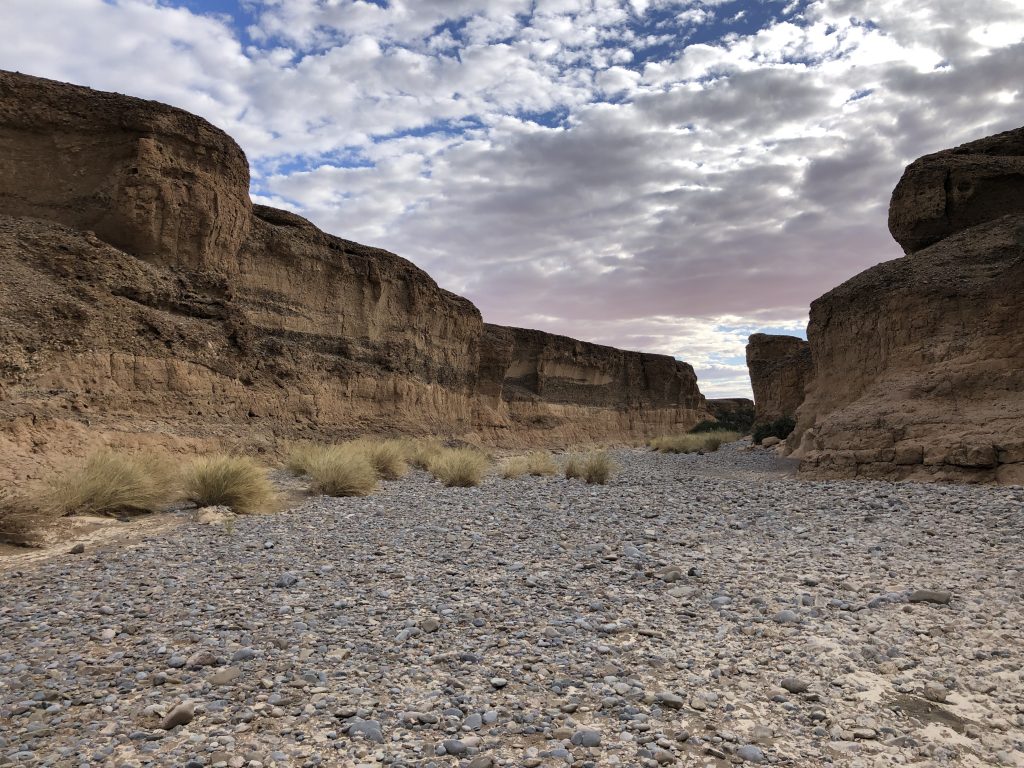
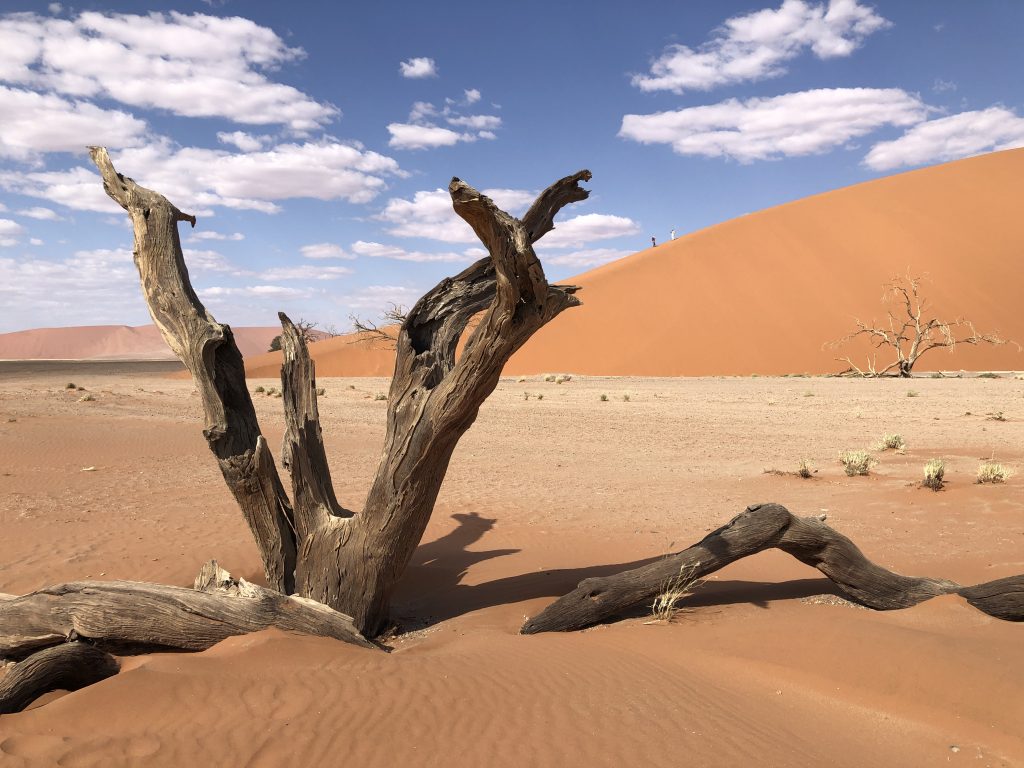
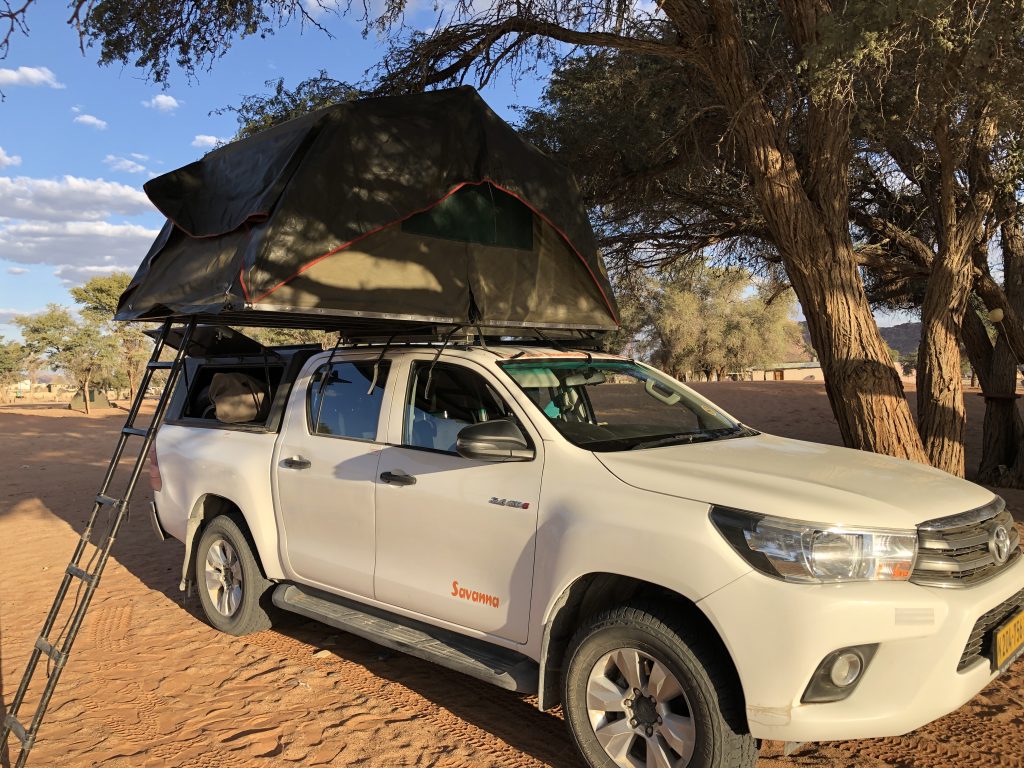
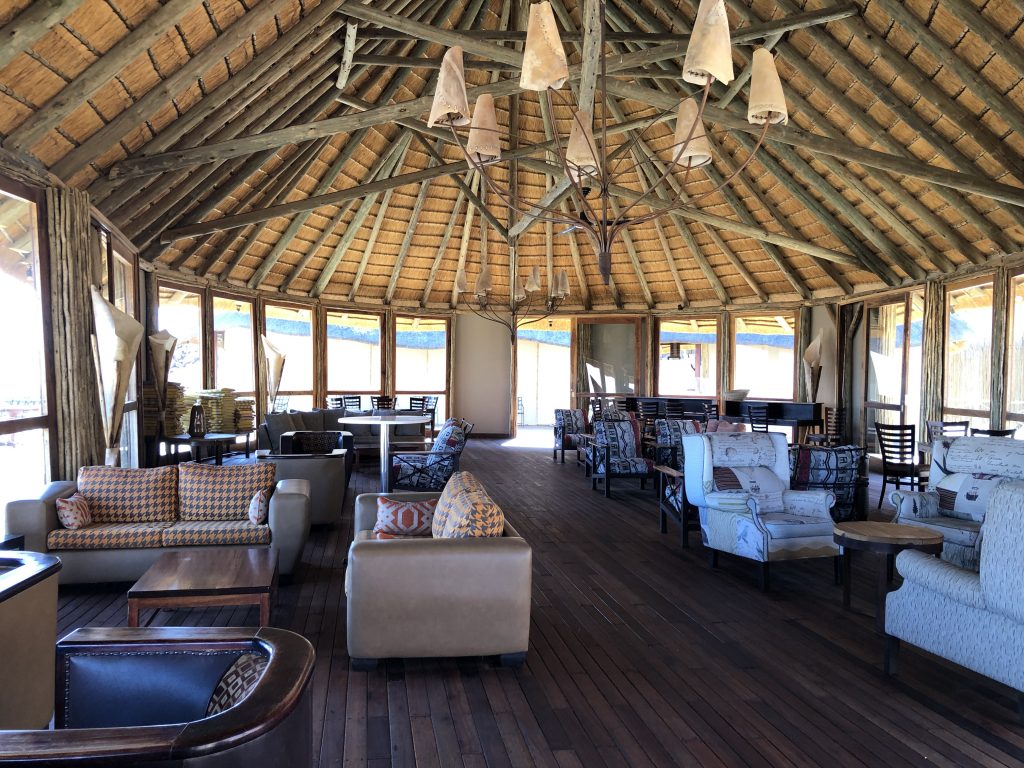
Sesriem – Fish River Canyon drive about 530km; 7hr
Day 10 – 13: After enjoying the last sunrise in this magnificent desert you can head today even further southwards and prepare yourself well for a quite long drive to the northern section of the mighty Fish River Canyon. Ensure you are well stocked on food and water as you will need to be fully self-sufficient for the coming 3 nights. Although it is a long drive, rest assured it is doable even if you will experience a flat tyre, however start your trip in the early morning and plan it well. Take a stop at Helmeringhausen for food and fuel stocking. Via Seeheim you will get closer to your destination. You can either stay some nights at the Canon Roadhouse within the Gondwana Collection or spend one night at the Klipspringer Base Camp before you start your hike of about 40km in total into the Canyon. The latter is facilitated by Gondwana and there will be a driver that will drive your food and sleeping stuff from camp to camp for you – a great slack packing option for all who want to hike the canyon but still sleep in a basic bed. The zebra trail is a three night hiking option to explore the fish river. The driver will drop you off at the starting point, about one hour from camp, from where you will start descending a kloof into the riverbed. Most of the hike will be within the fish riverbed, depending on the water levels you might need to go through the ice cold water. At the end of your first day you will climb up the canyon back to the top and enjoy splendid views into the canyon. The Battlesnake rest camp is situated at the edge of the canyon offering fabulous views into the river. Day two is about another 20km hike starting again with descending back into the riverbed and following the river until you can spot the Horseshoe camp at the rim. You need to pass by and climb up afterwards to come from the back to the camp that is beautifully situated right at the edge with open bathrooms allowing you to have a view onto the canyon. You will spend your last night at the canyon before your driver will pick you up again and bring you back to the Klipspringer Base camp.
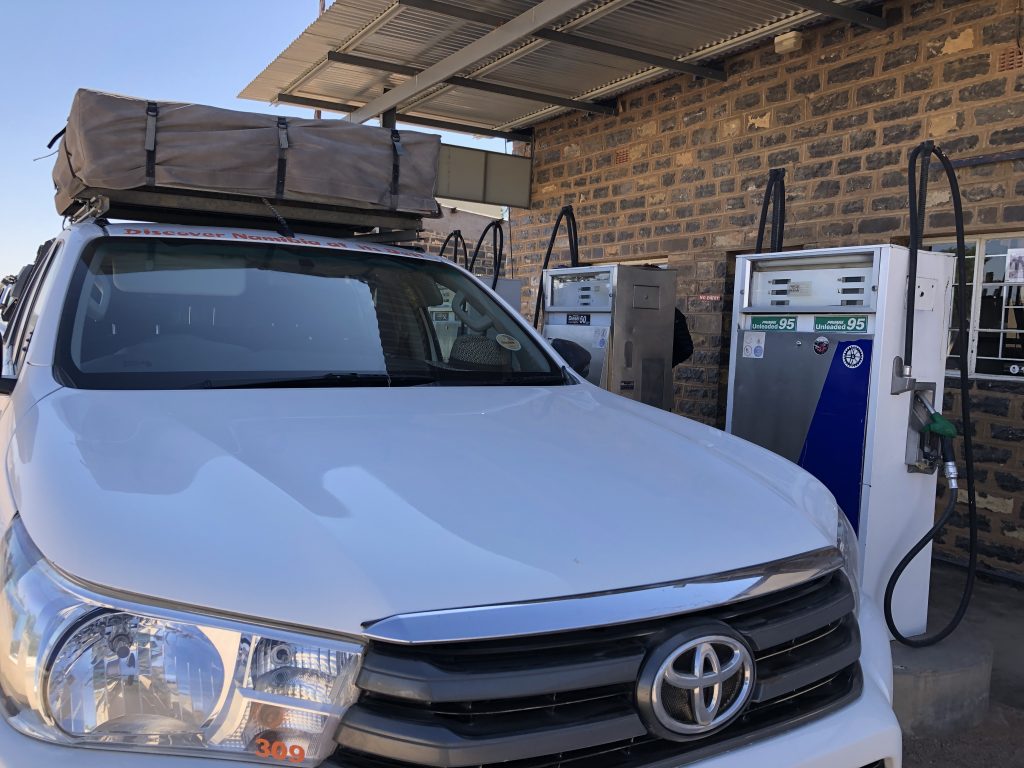
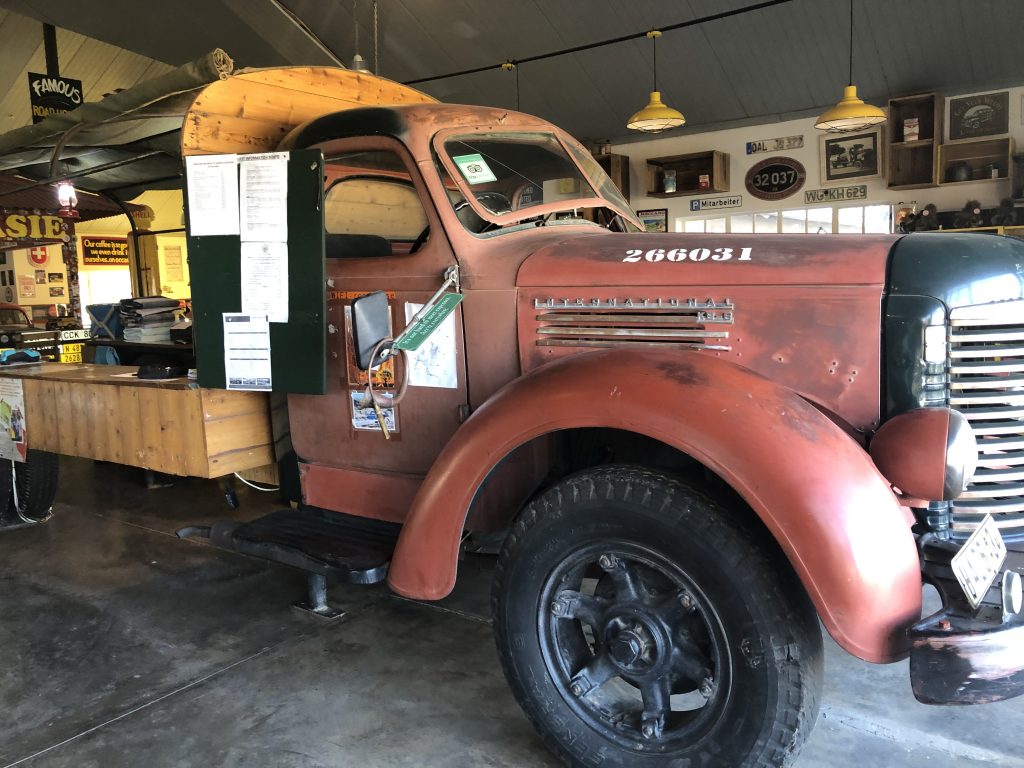
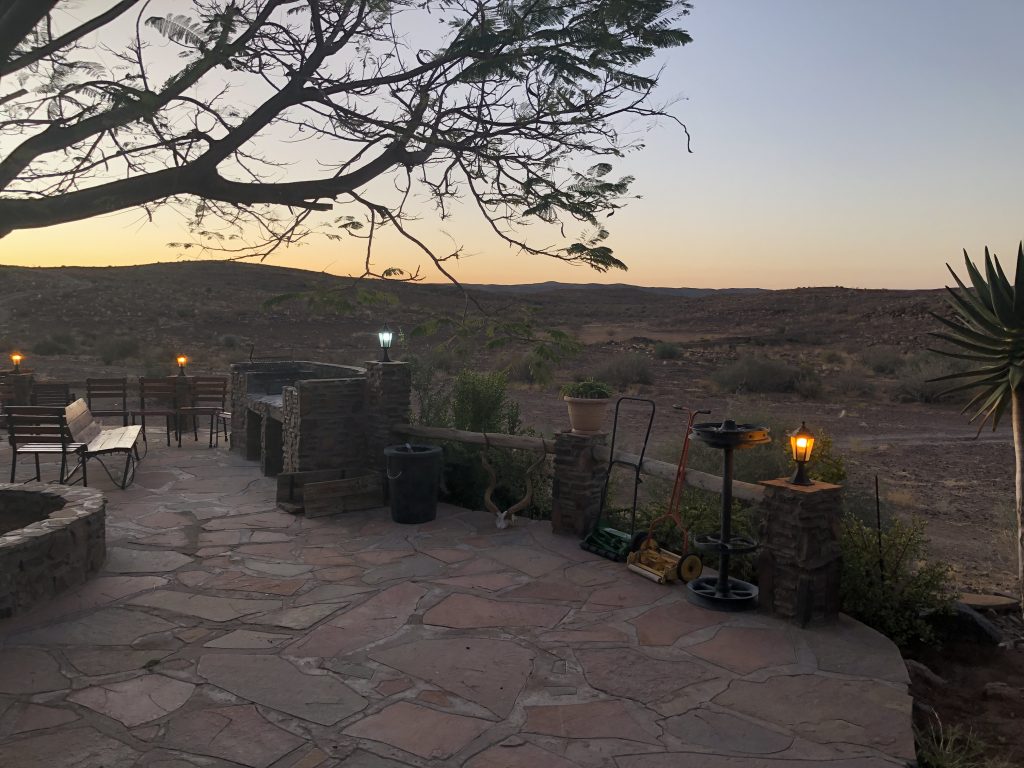
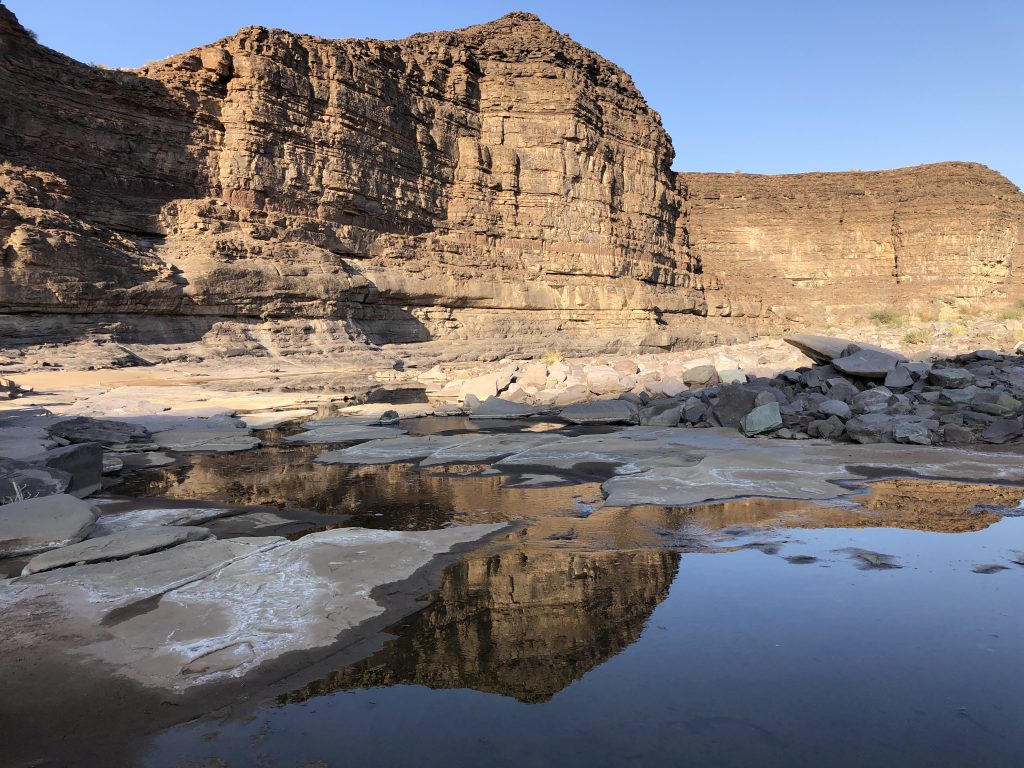
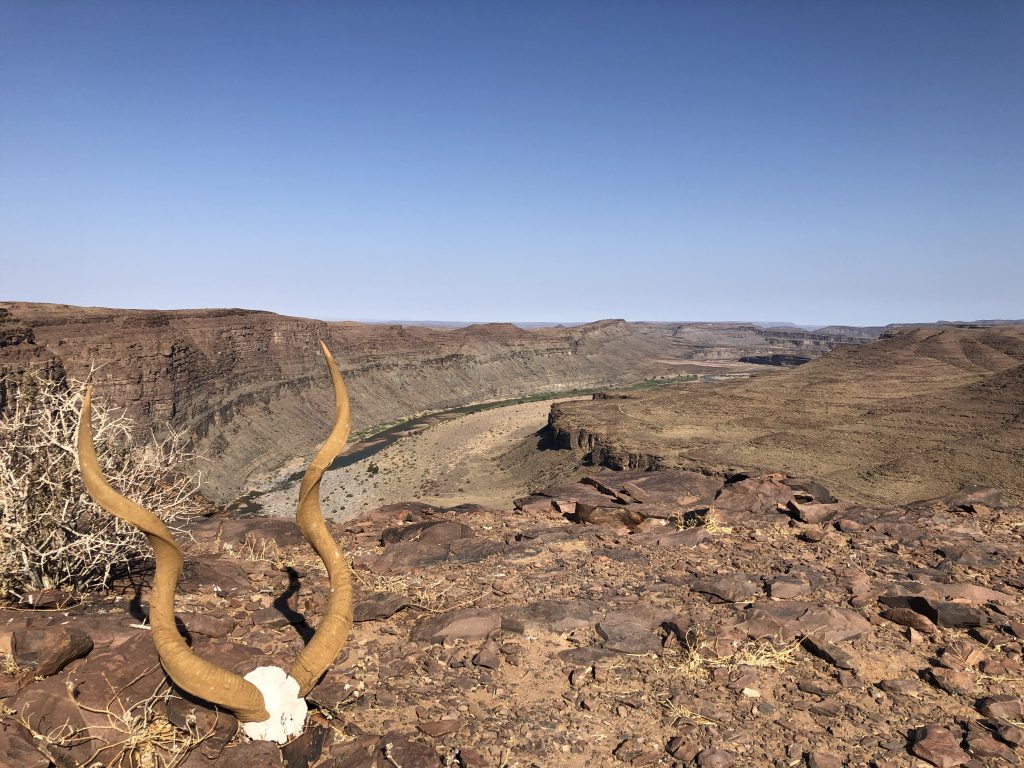
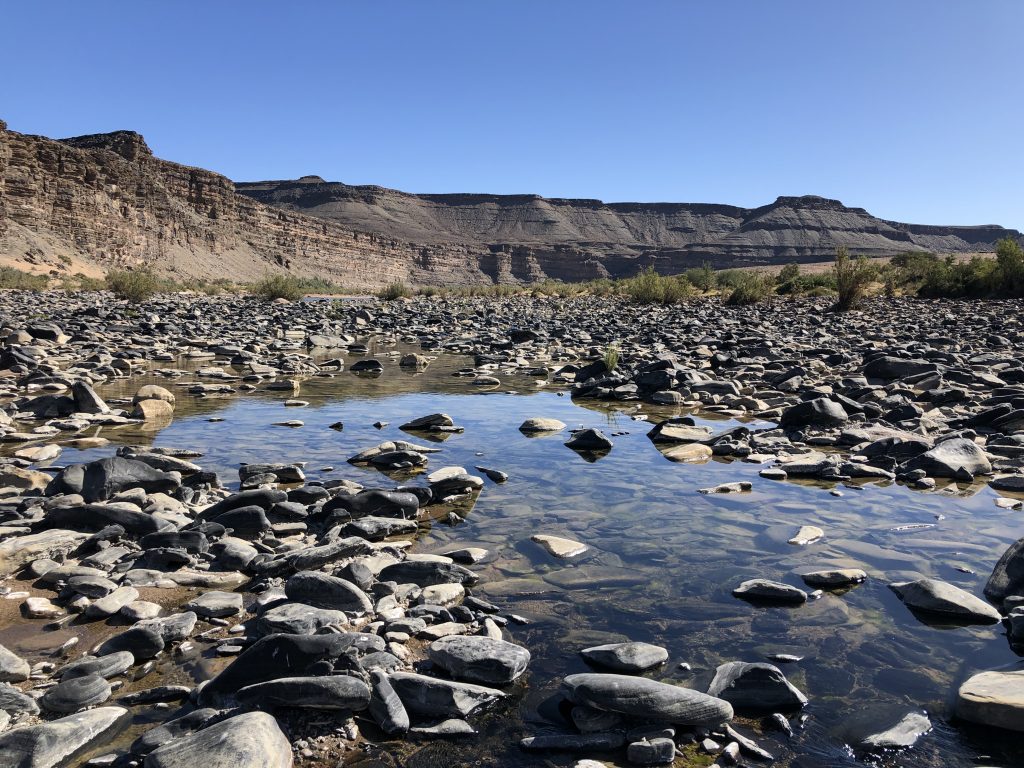
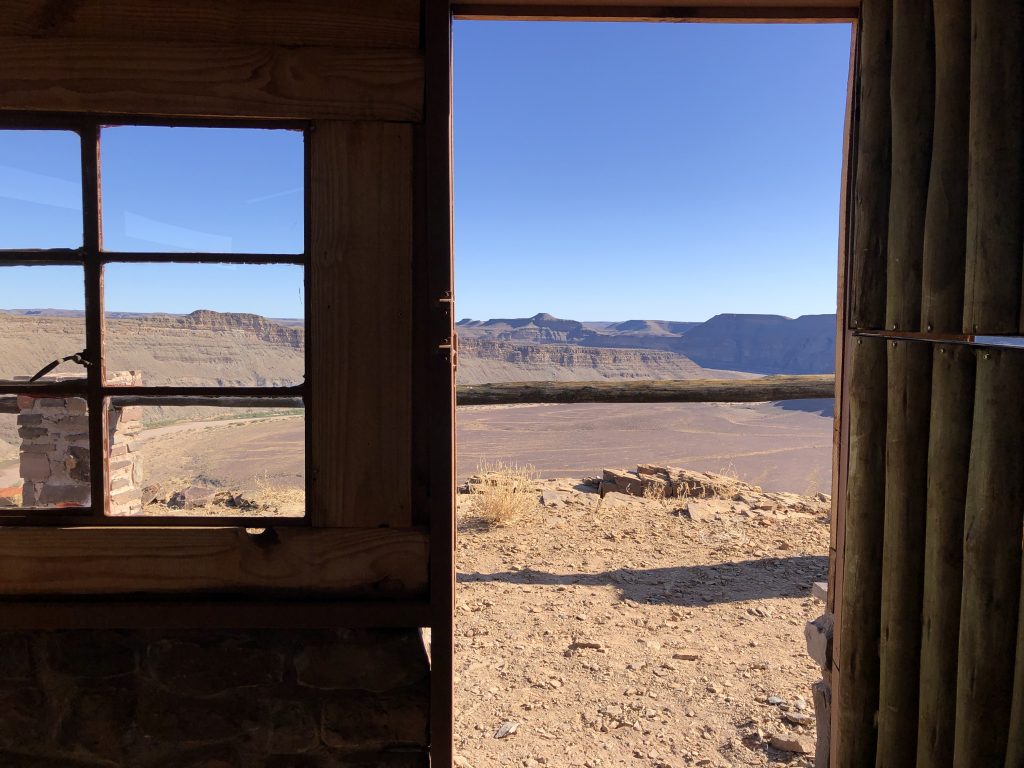
Fish River Canyon – Kalahari drive about 420km; 5hr 30 min
Day 14 – 15: This morning will bring you back to the base camp and to your car for a drive into the red dunes of the beautiful Kalahari towards the border post of South Africa, where you could enter the amazing Kgalagadi Transfrontier Park via the Mata Mata gate (read here about a separate adventure through the Kagalagadi Transfrontier Park). Unfortunately, due to the ongoing pandemic at the time of my travel it was not possible to enter this park for any day trips. Nevertheless, there will hopefully be a time after COVID-19 where you should take the opportunity to explore this park for a day from the Kalahari Game Lodge, a lovely spot to camp for the next 2 nights. The last hour of driving towards the lodge leads you through the dunes with sublime views, take it slow here and enjoy nature’s beauty! The camp site of the lodge is placed in the picturesque Auob riverbed that borders the Kgalagadi Transfrontier Park. This campsite even offers you your private ablution facilities but has no electricity, it runs on solar only. If you fancy the more luxurious option then you can opt for the luxury chalets that the lodge offers. Especially when camping in the winter months, be prepared for minus degrees during night and early morning hours, either take enough warm clothes or firewood to at least make a decent fire that keeps you warm. The lodge offers a Lion tracking tour, which includes a proper bundu bashing experience depending where the lions are roaming. The tour is great fun with possible close encounters of the big cats.
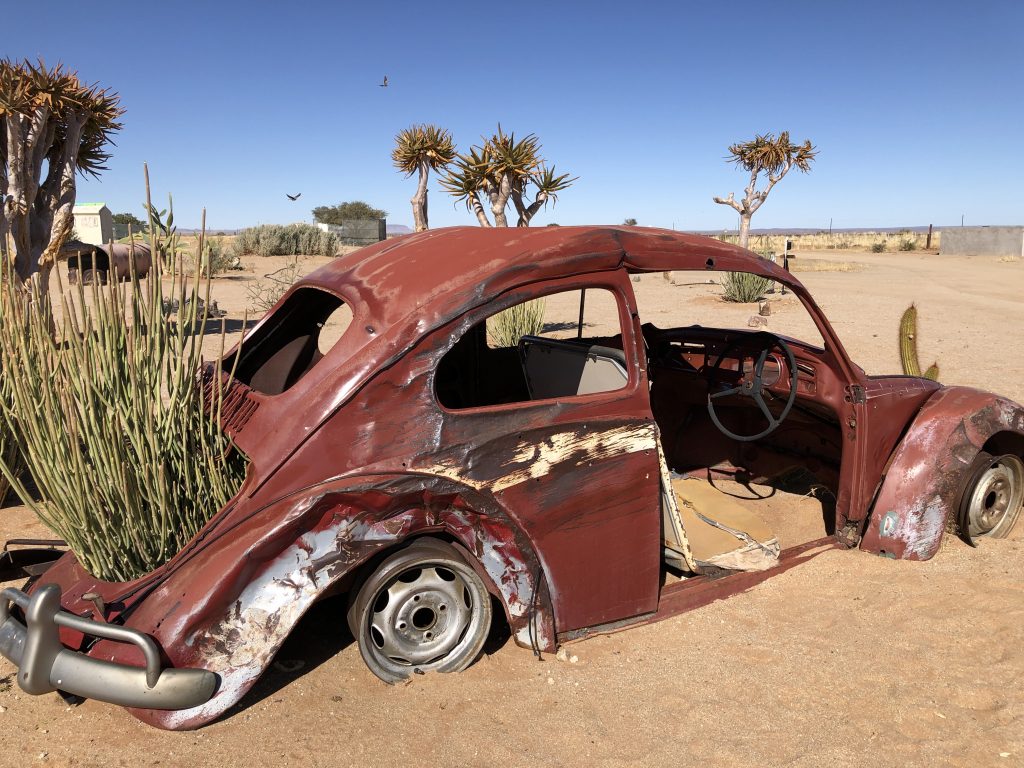
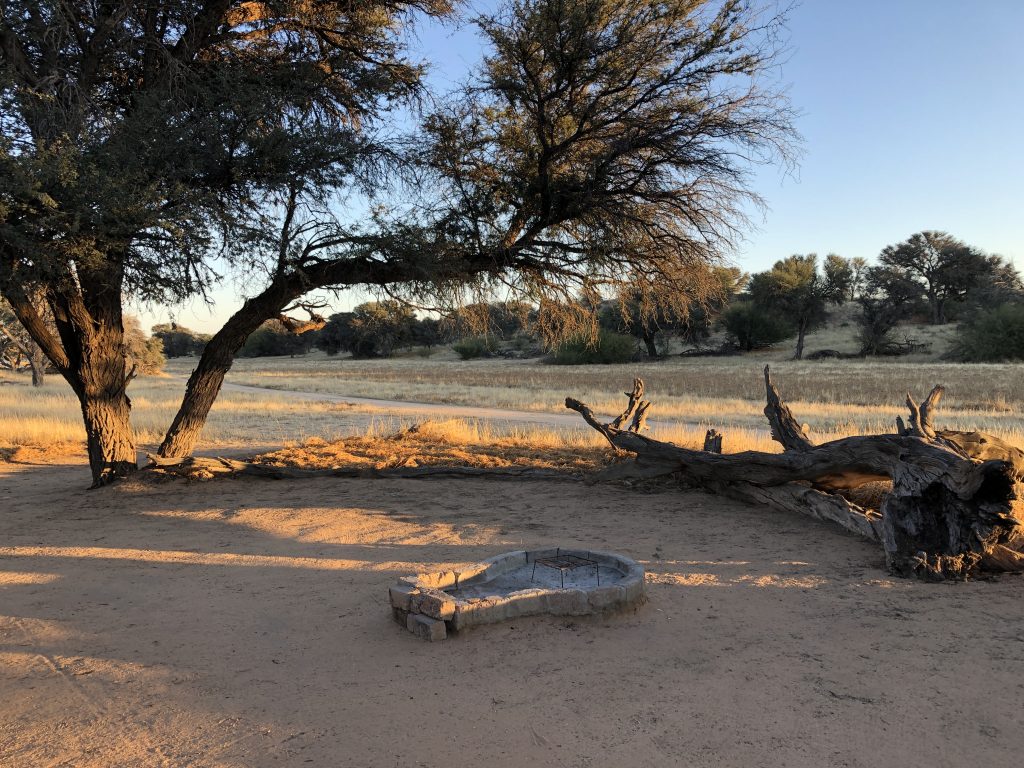
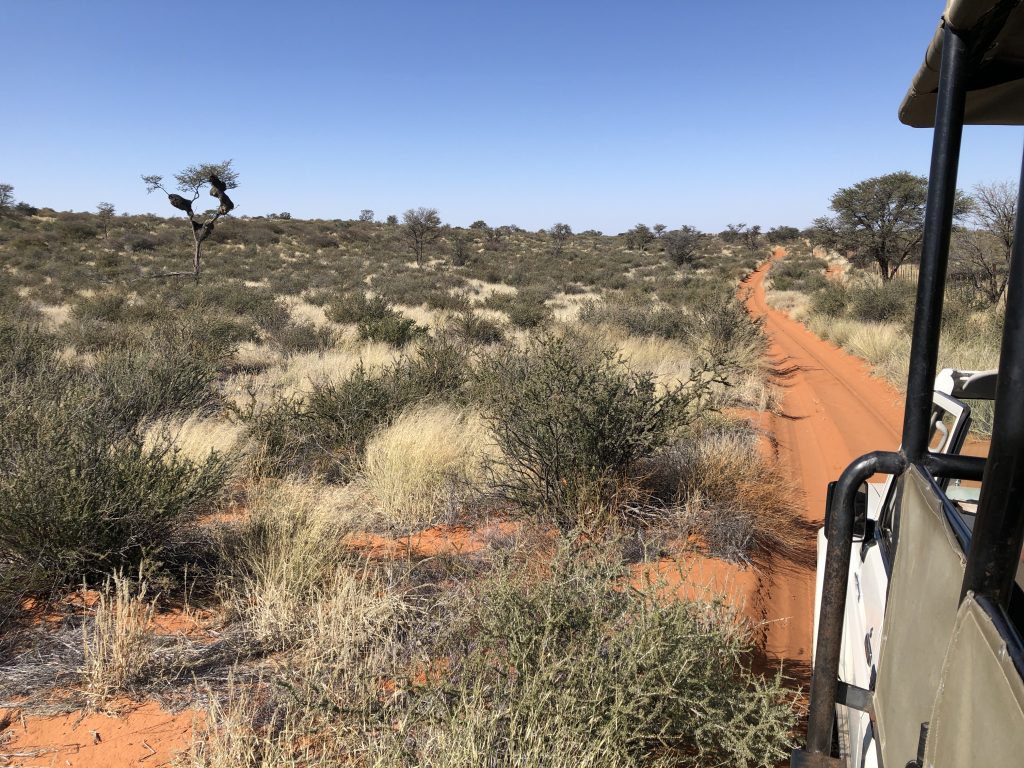
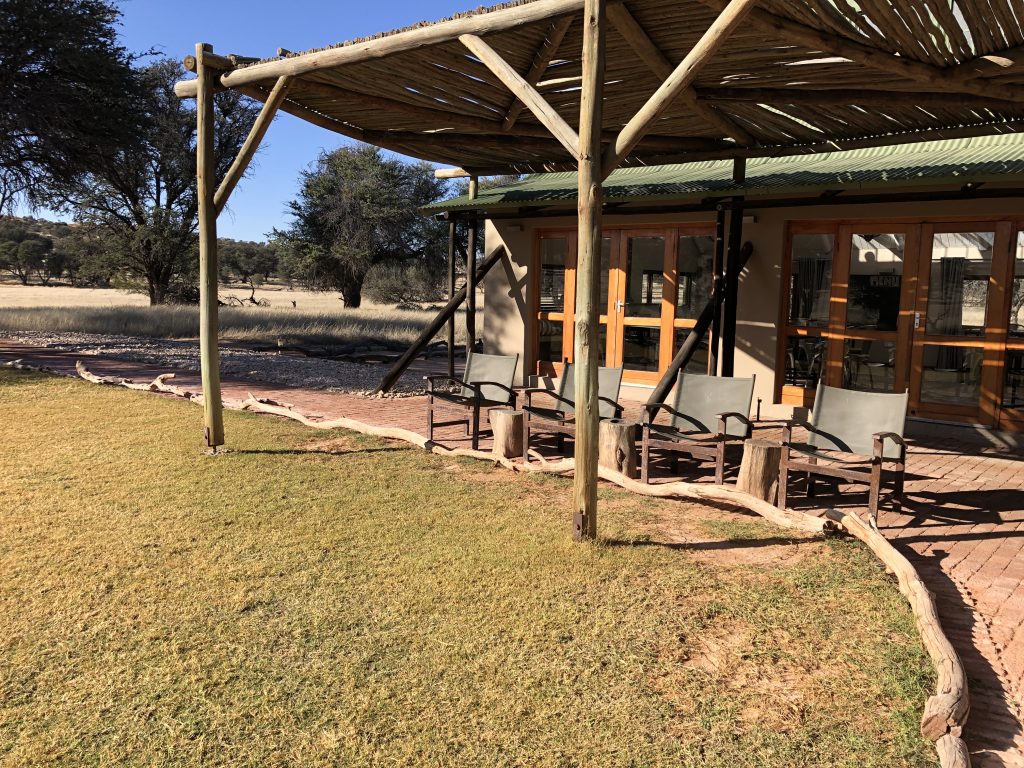
Kalahari – Northern Kalahari drive about 360km; 4hr
Day 16 – 17: While you say goodbye to your current location you don’t have to leave the fascinating Kalahari yet. As you head further north towards Windhoek, you can spend the last 2 nights for about 2 hours away from the capital and still enjoy your last nights in the red sand. Teufelskrallen Tented Lodge is a perfect spot to reminisce about your trip while relaxing in the dunes and indulging in the incredible views that this camp has to offer. You can go on a self-hiking trip or a biking trip through the reserve, however be prepared there is no map available and you can actually feel lost and walk or cycle in a 6km circle, realizing one hour later that you actually have not moved on at all. Mentally it can be very challenging, hence make sure to check out the sign posts and follow the yellow bicycle signs, take enough water and start early to not get surprised by the darkness and cold that are no helpers in dire times.
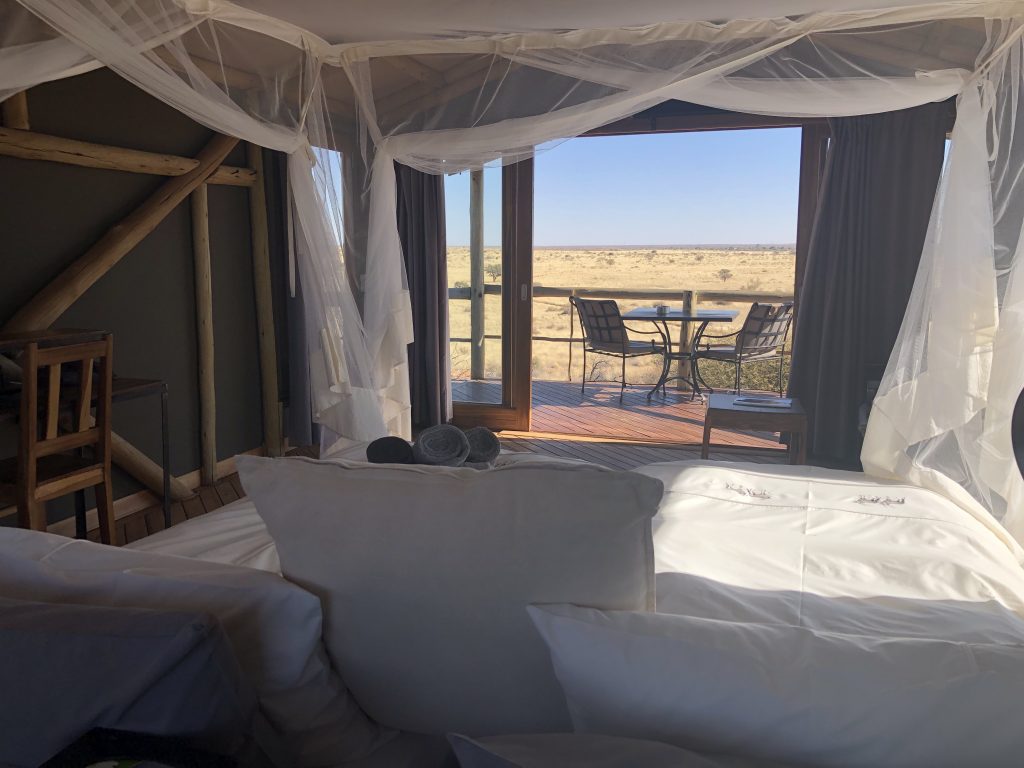
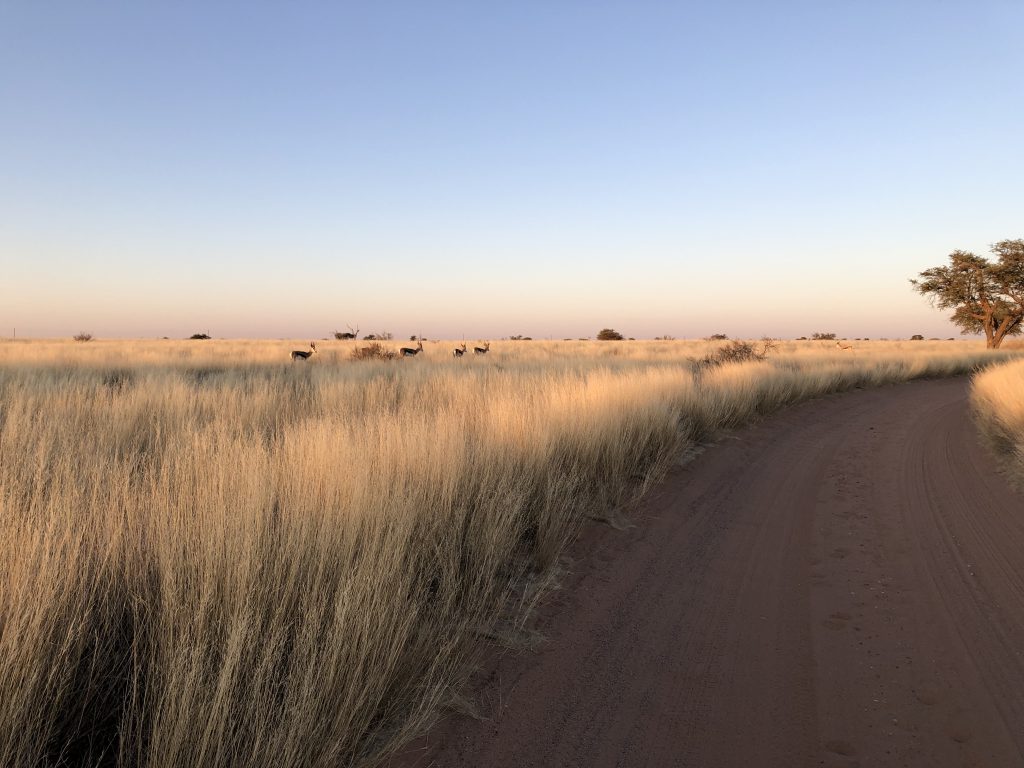
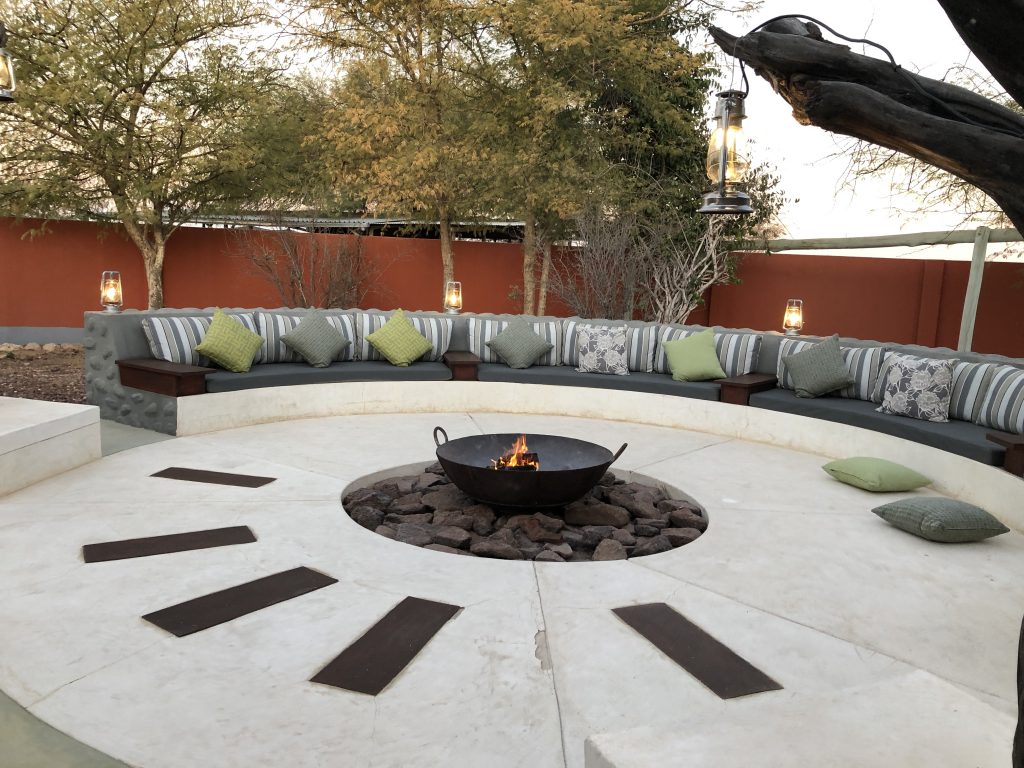
Northern Kalahari – WDH Airport drive about 230km; 2hr 30min
Day 17: Depending on your flight time you might want to hit the road very early to be able to drop off your beloved car and home for the past 2 weeks before heading into the Airport and stepping on the flight back home with a new adventure lived through and new memories created that will last you for a lifetime. Bybe bye, salut and !Gâise !gû re ∞
